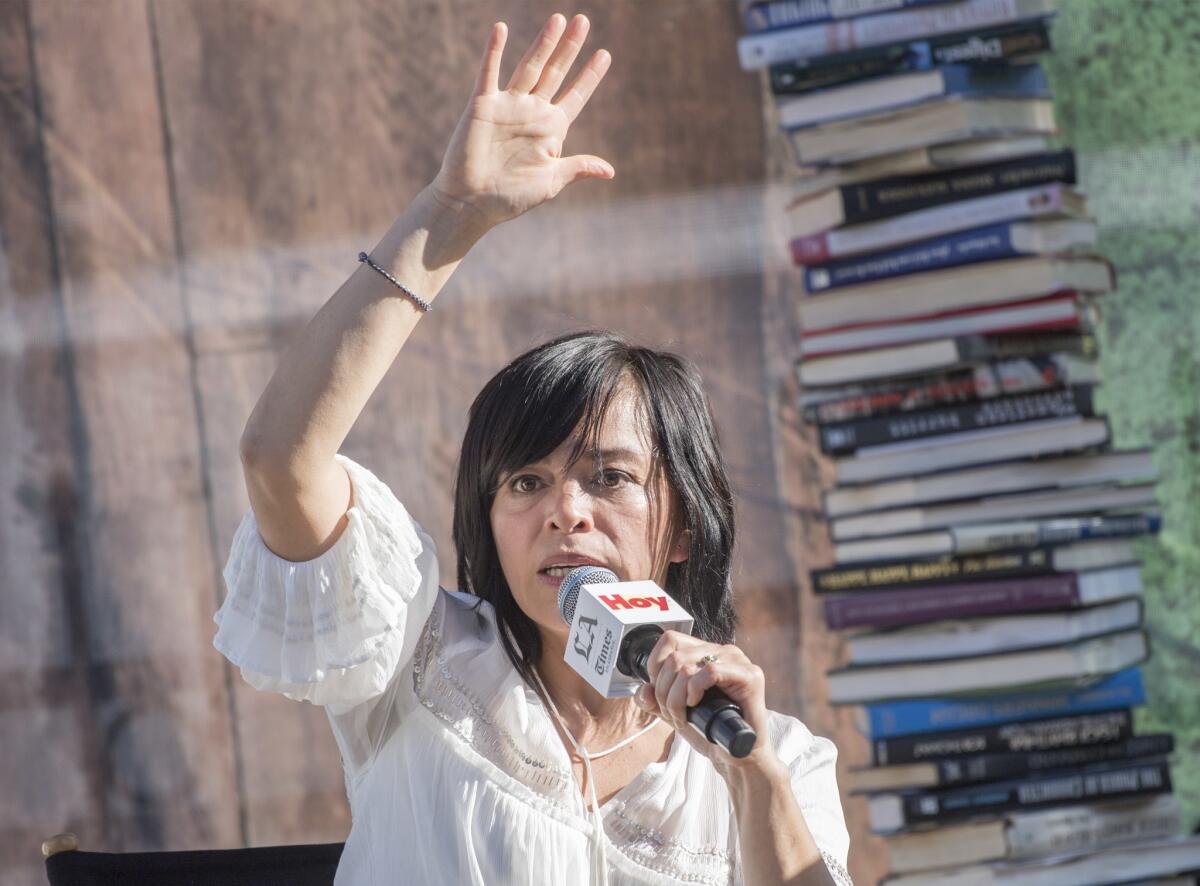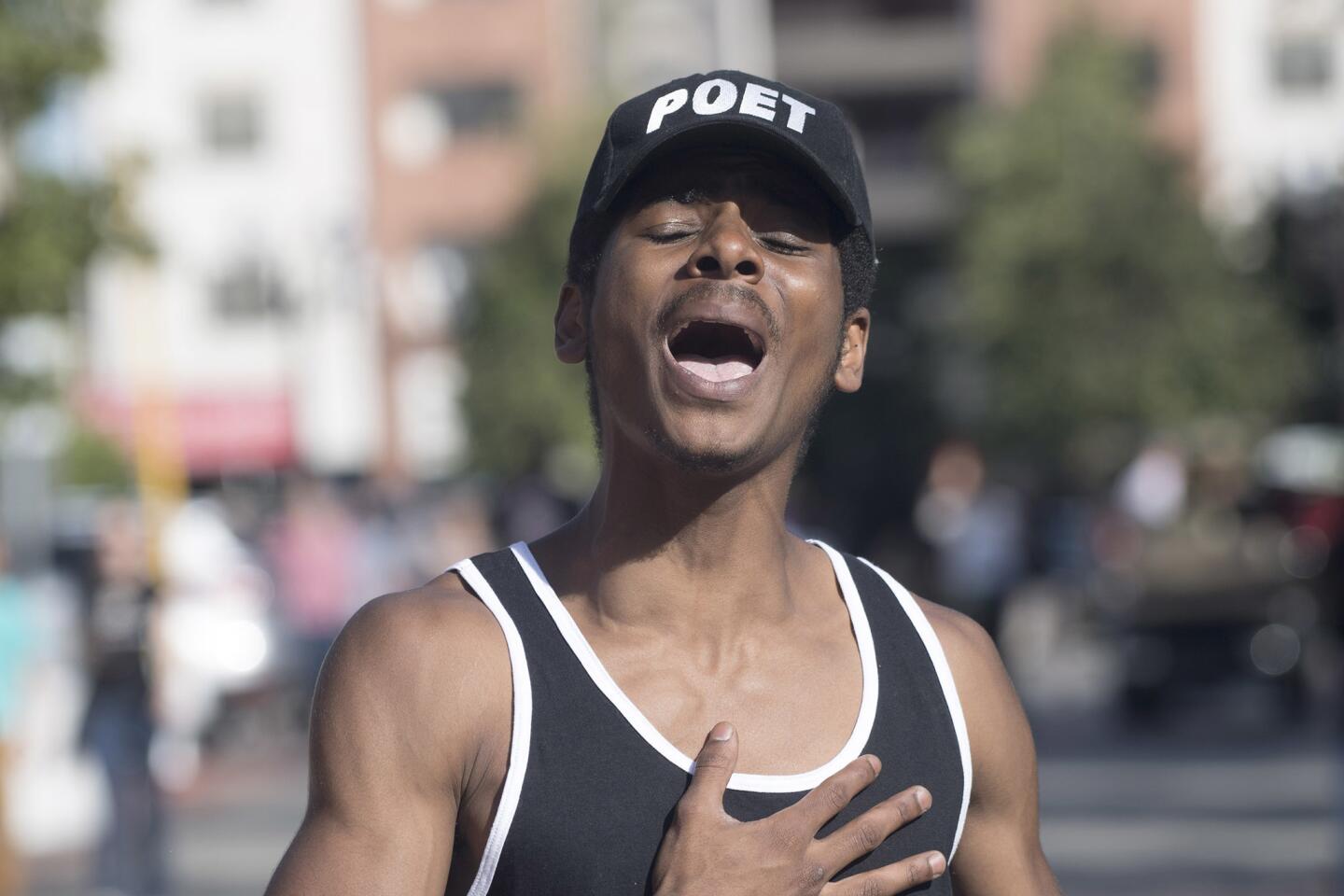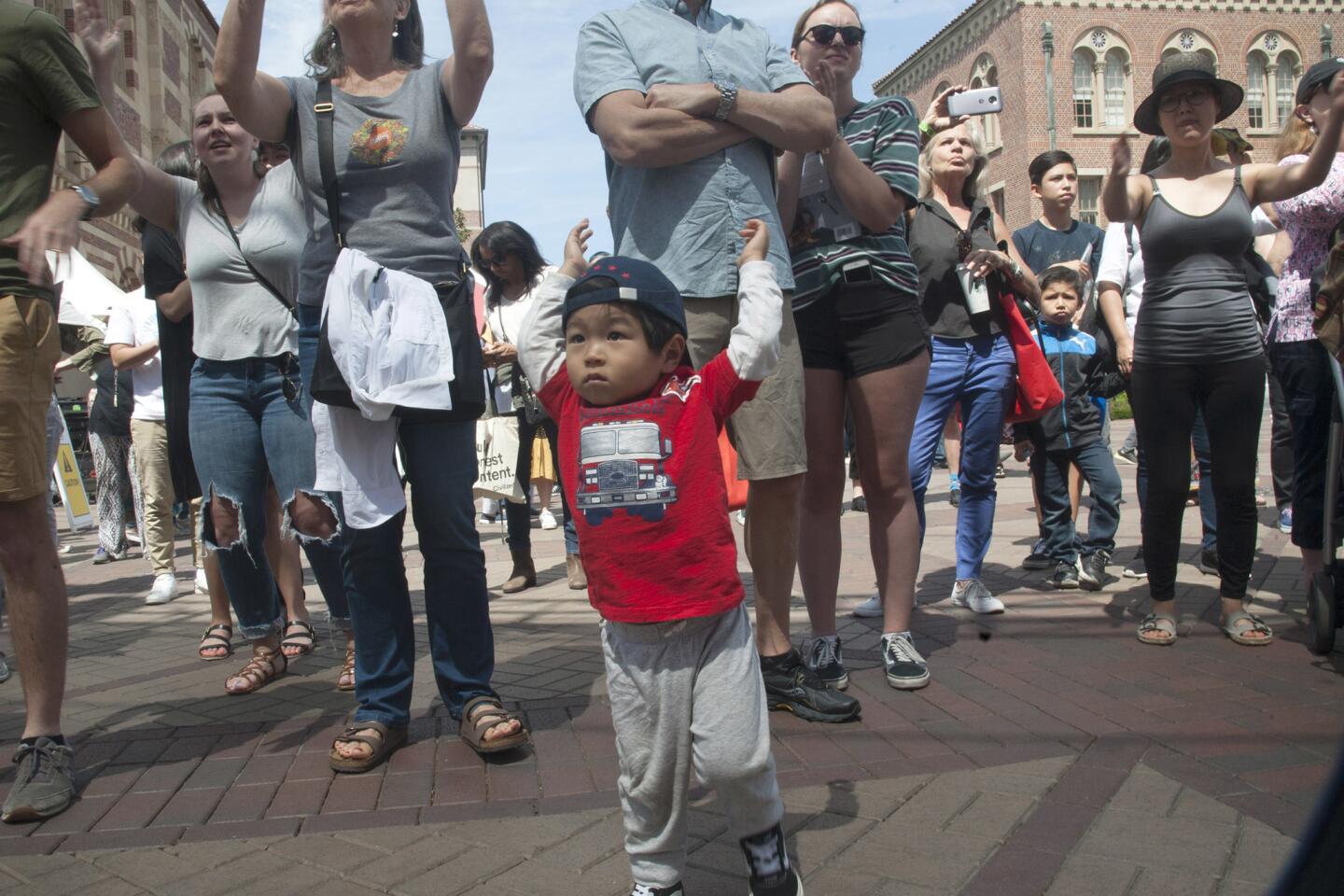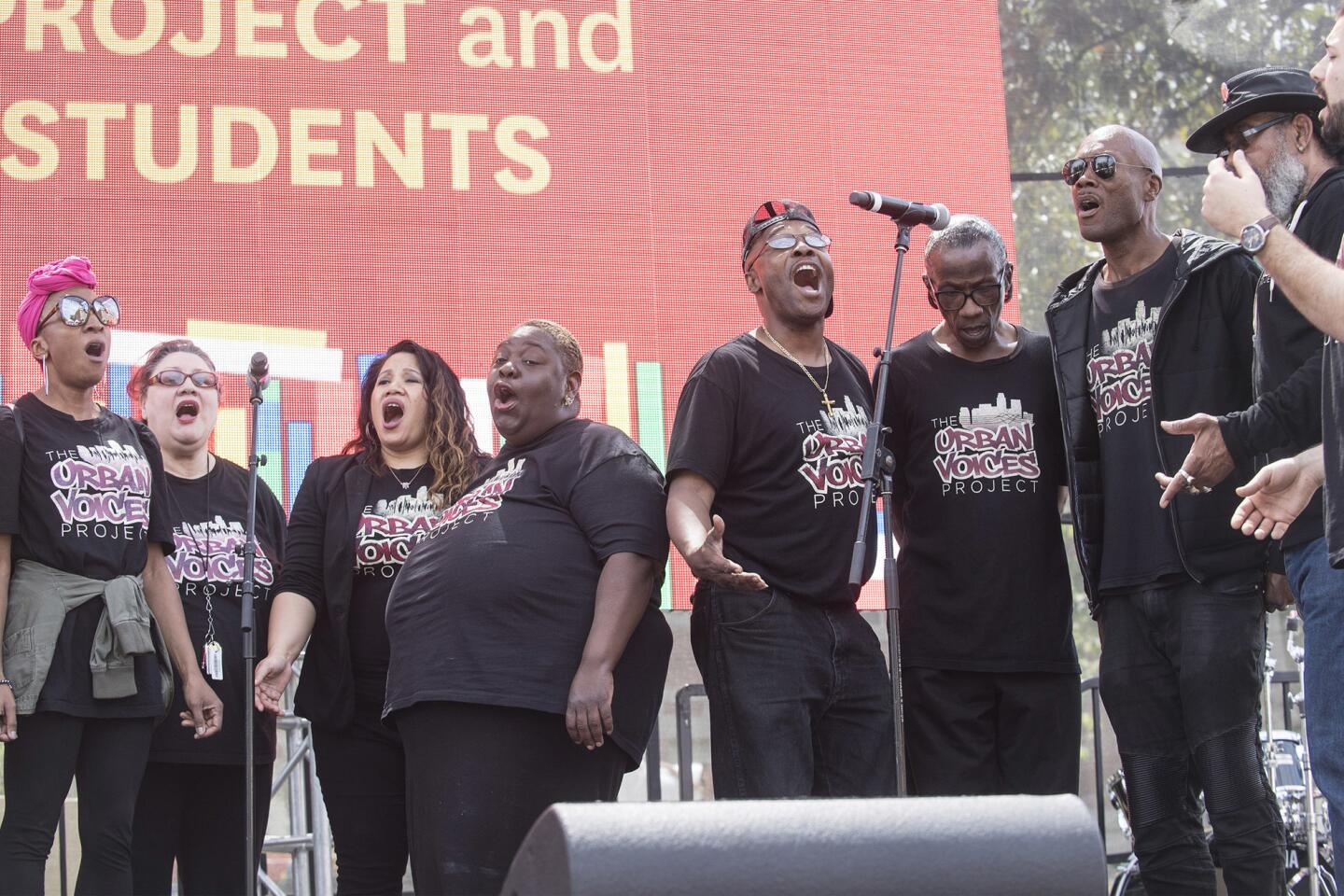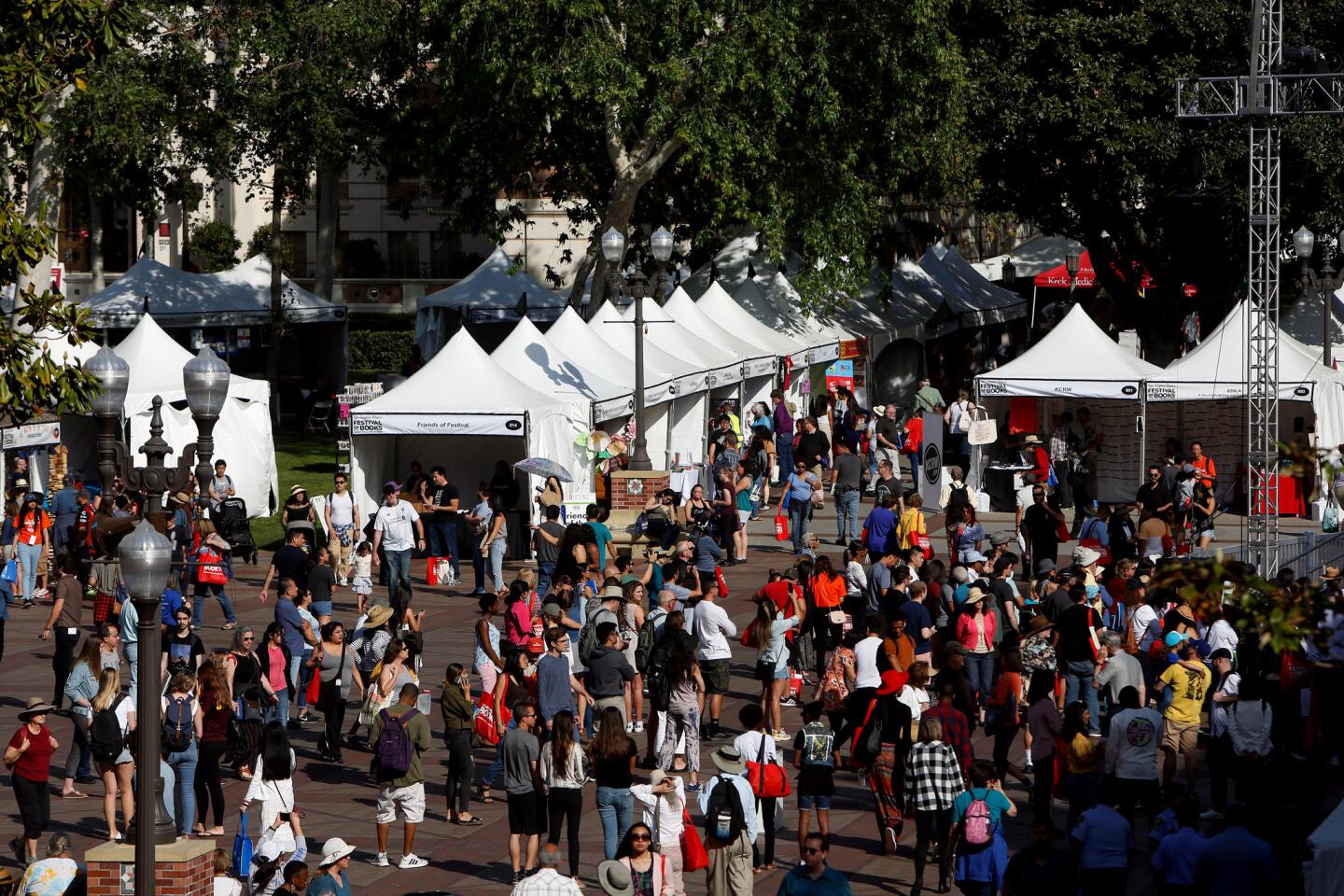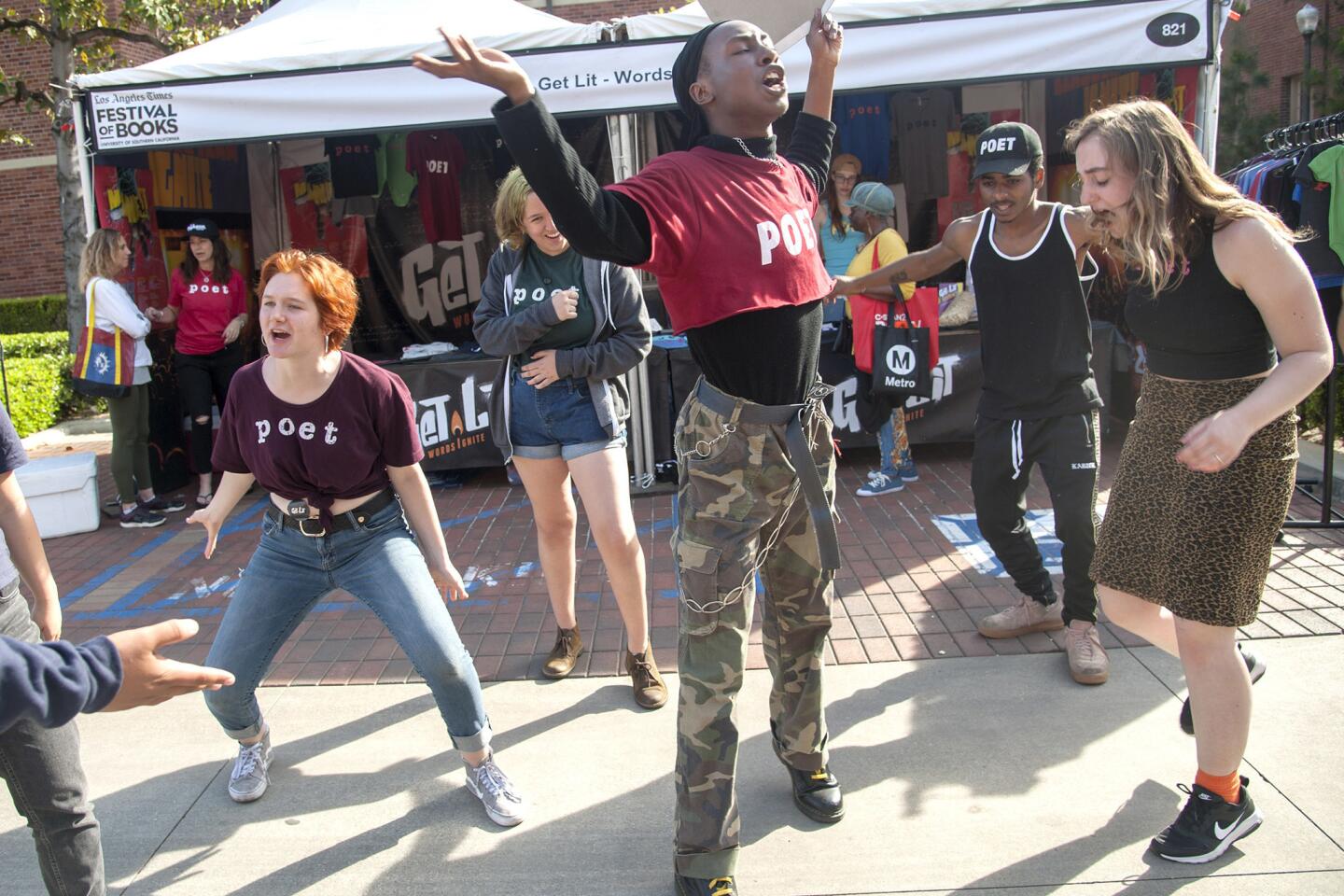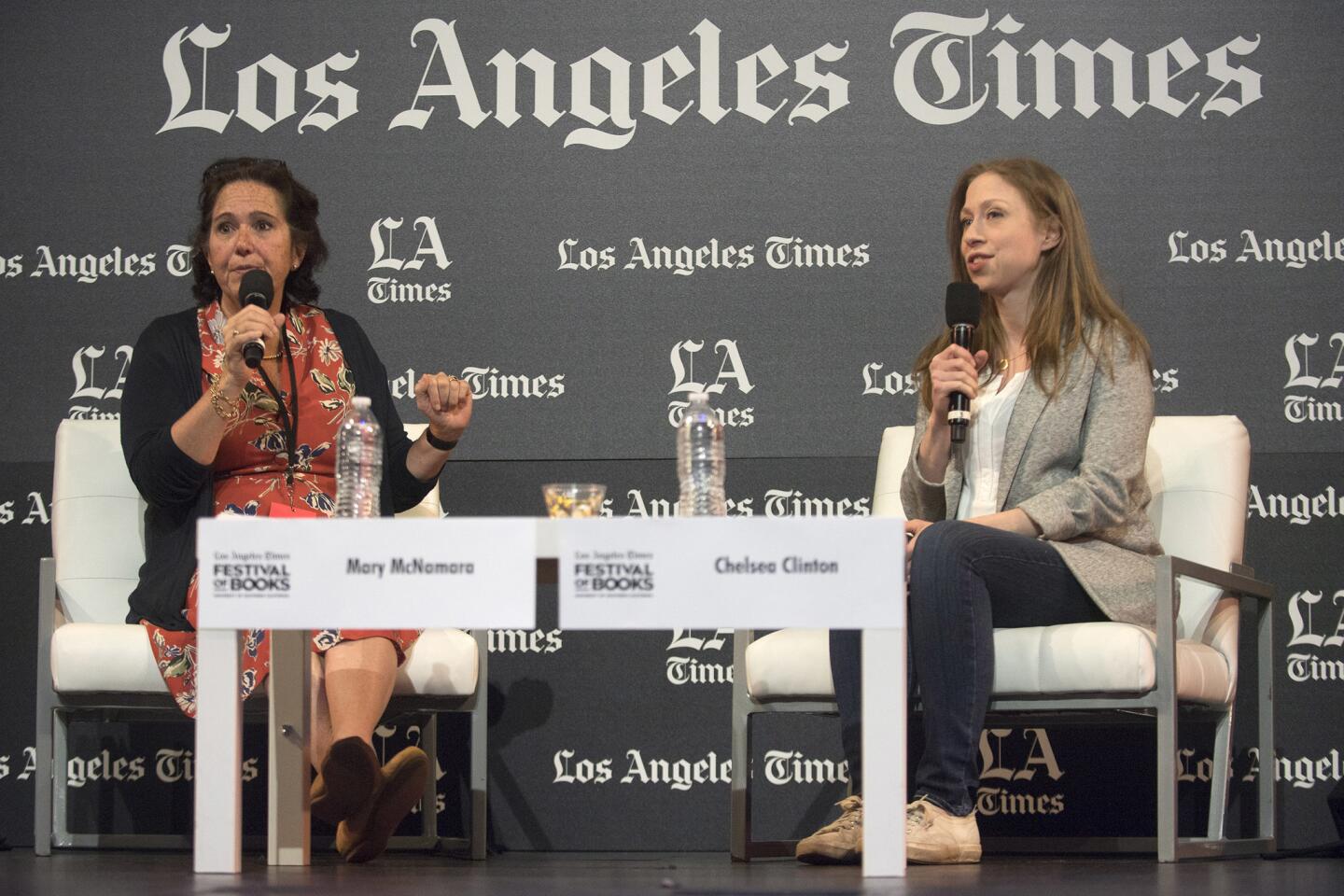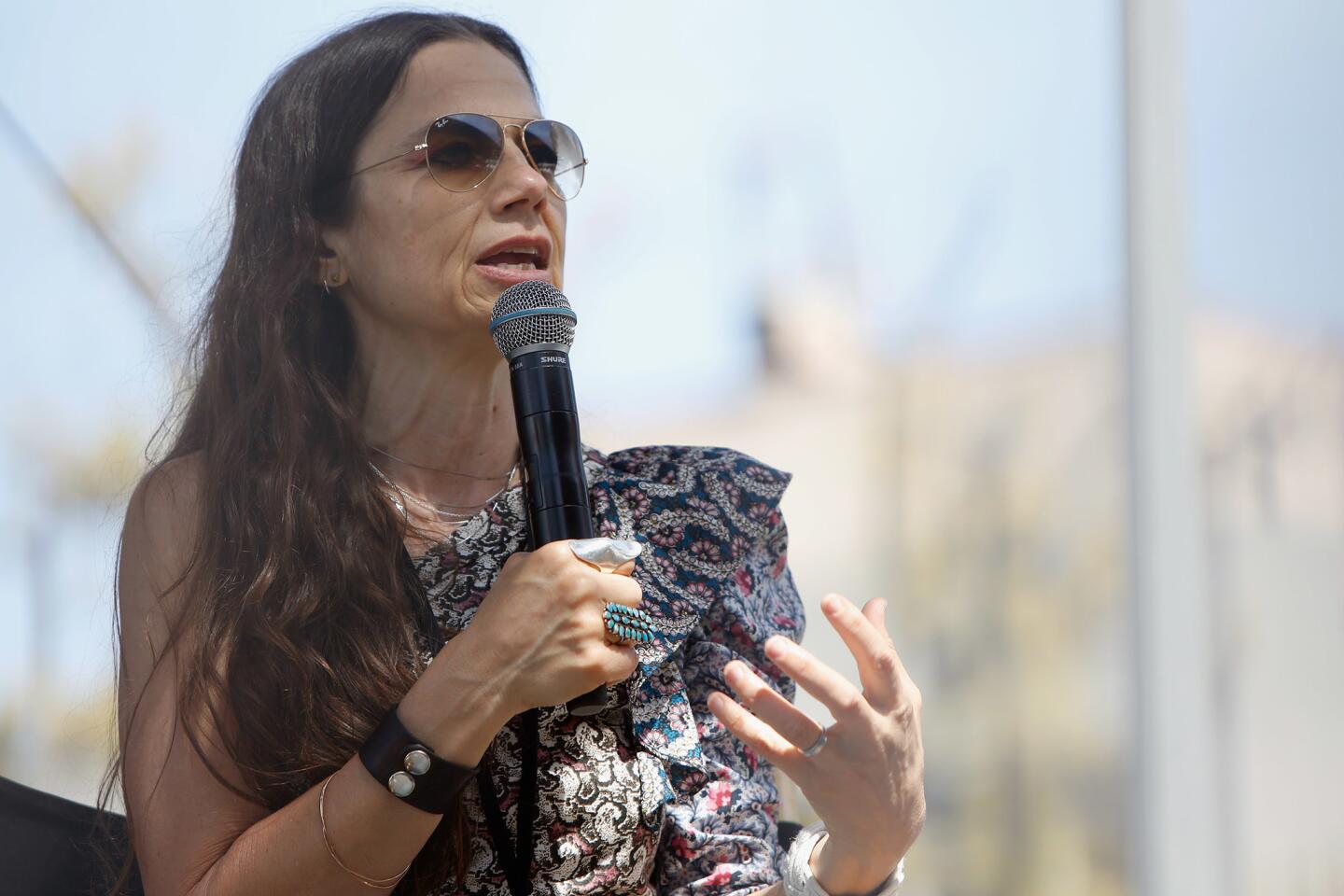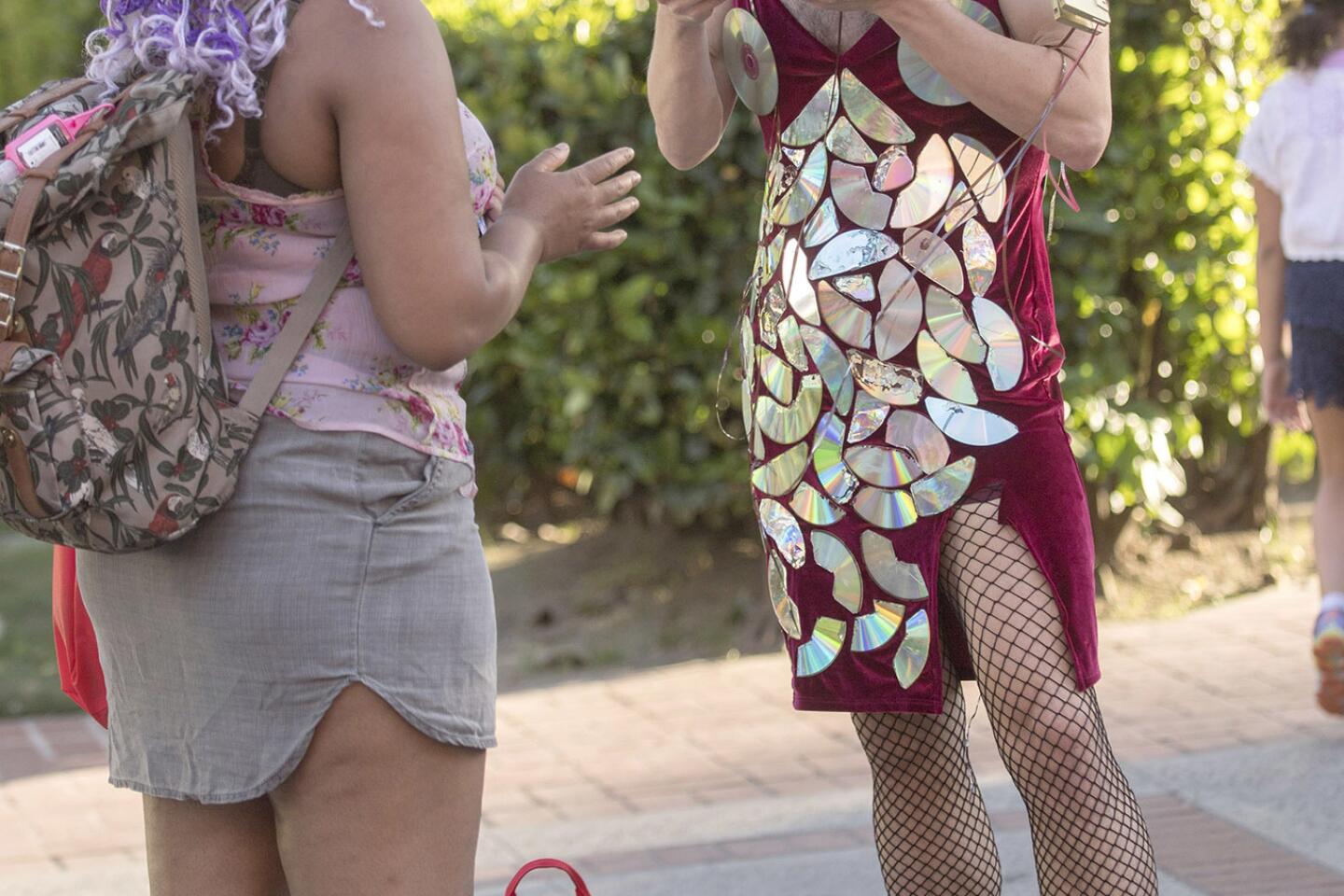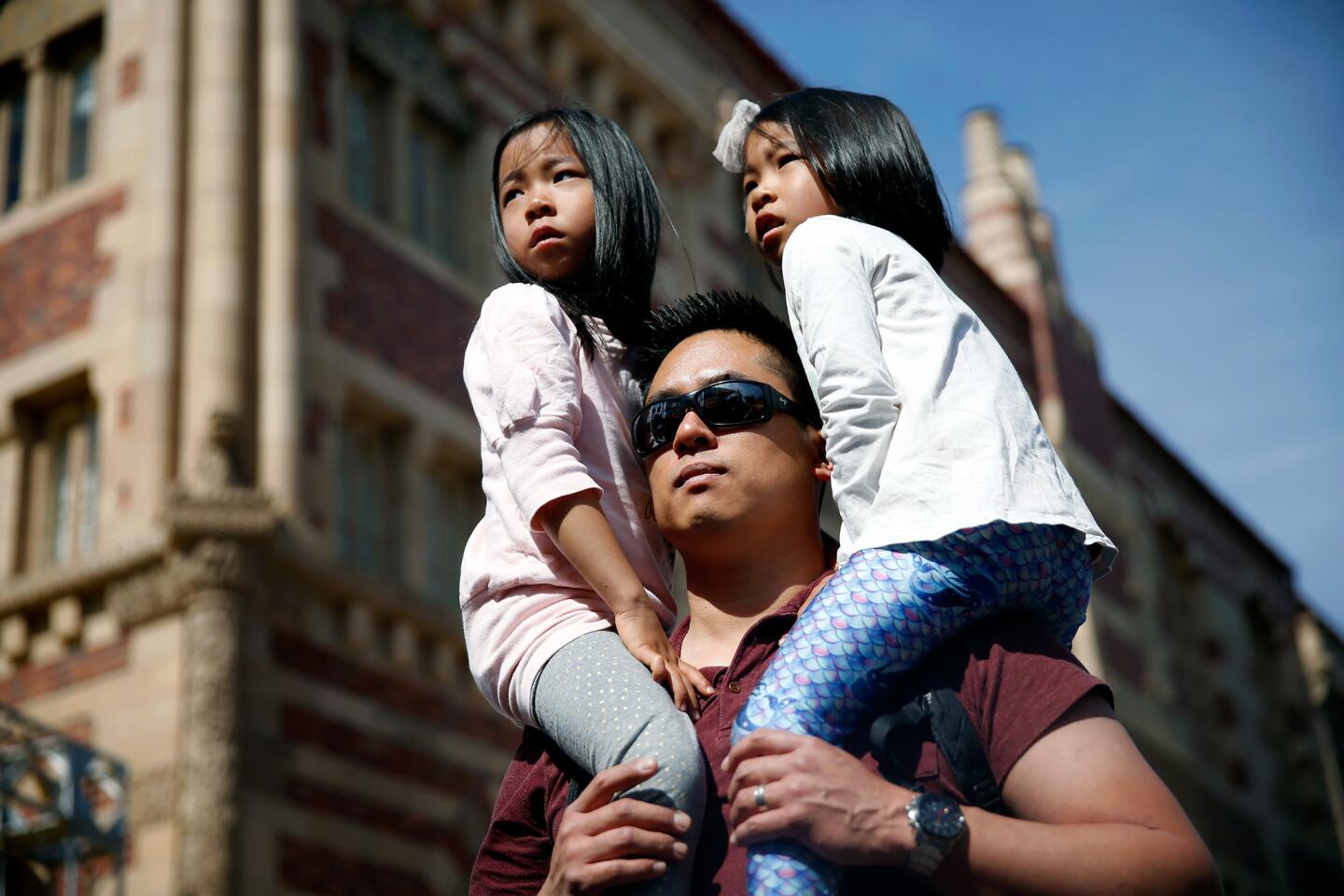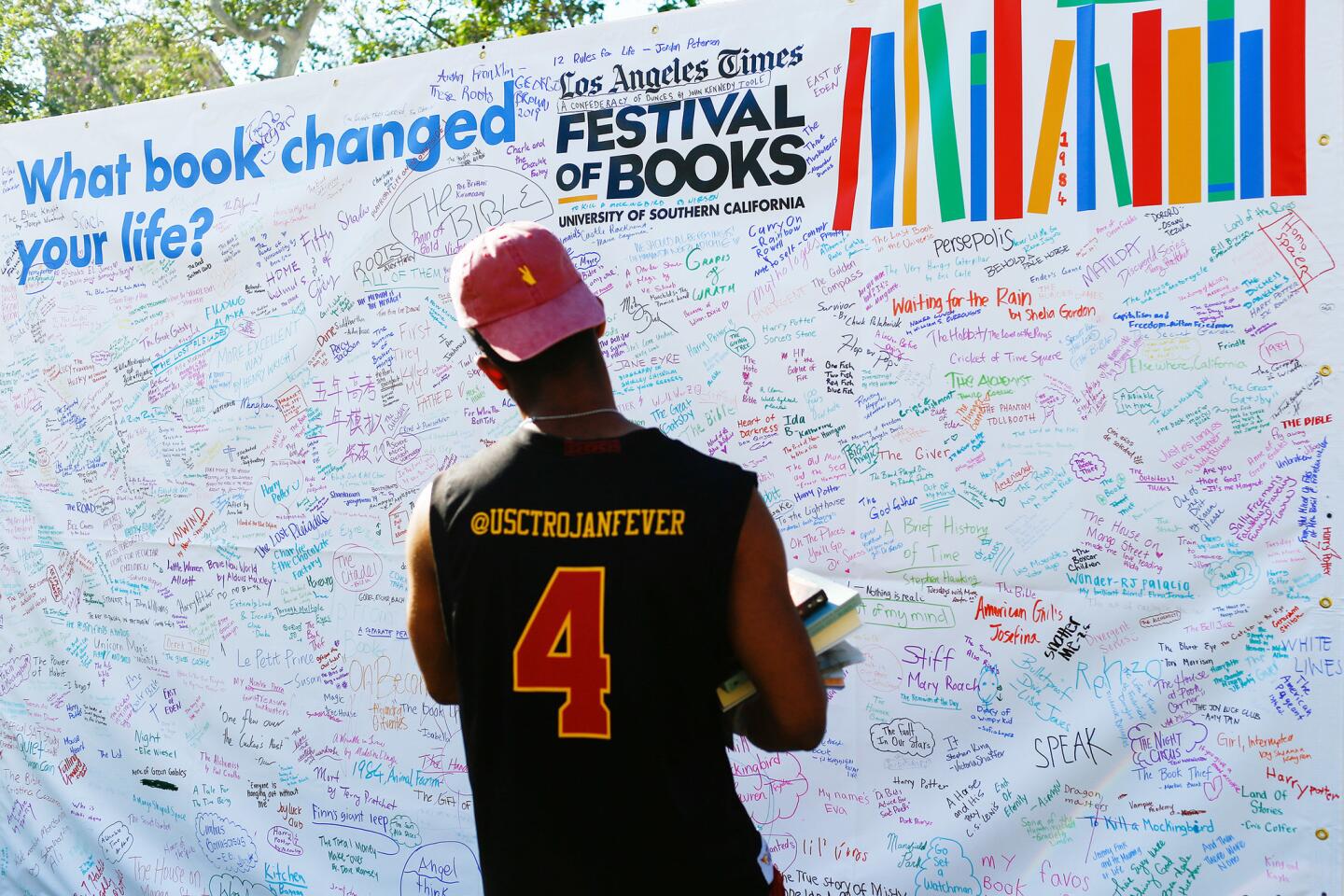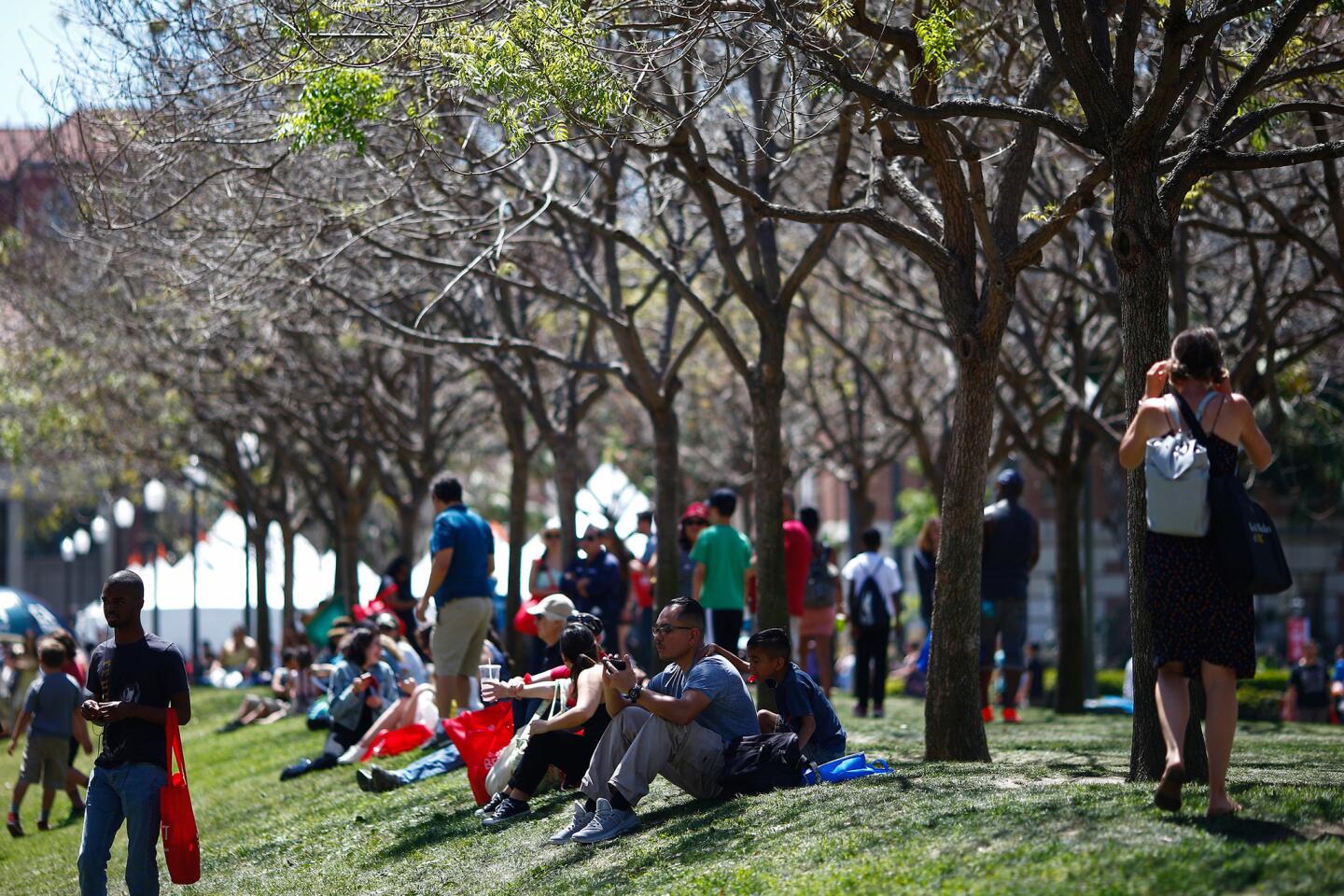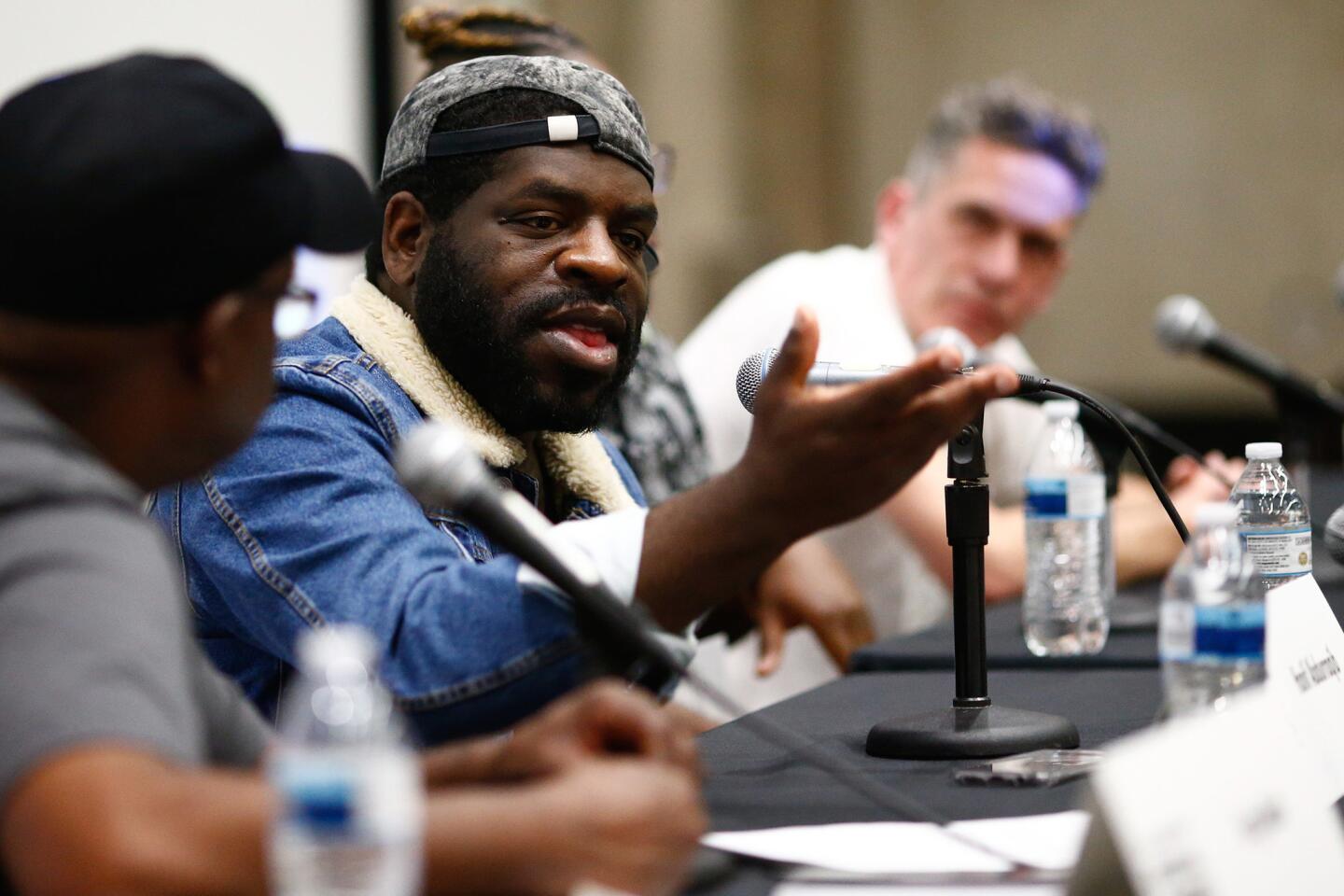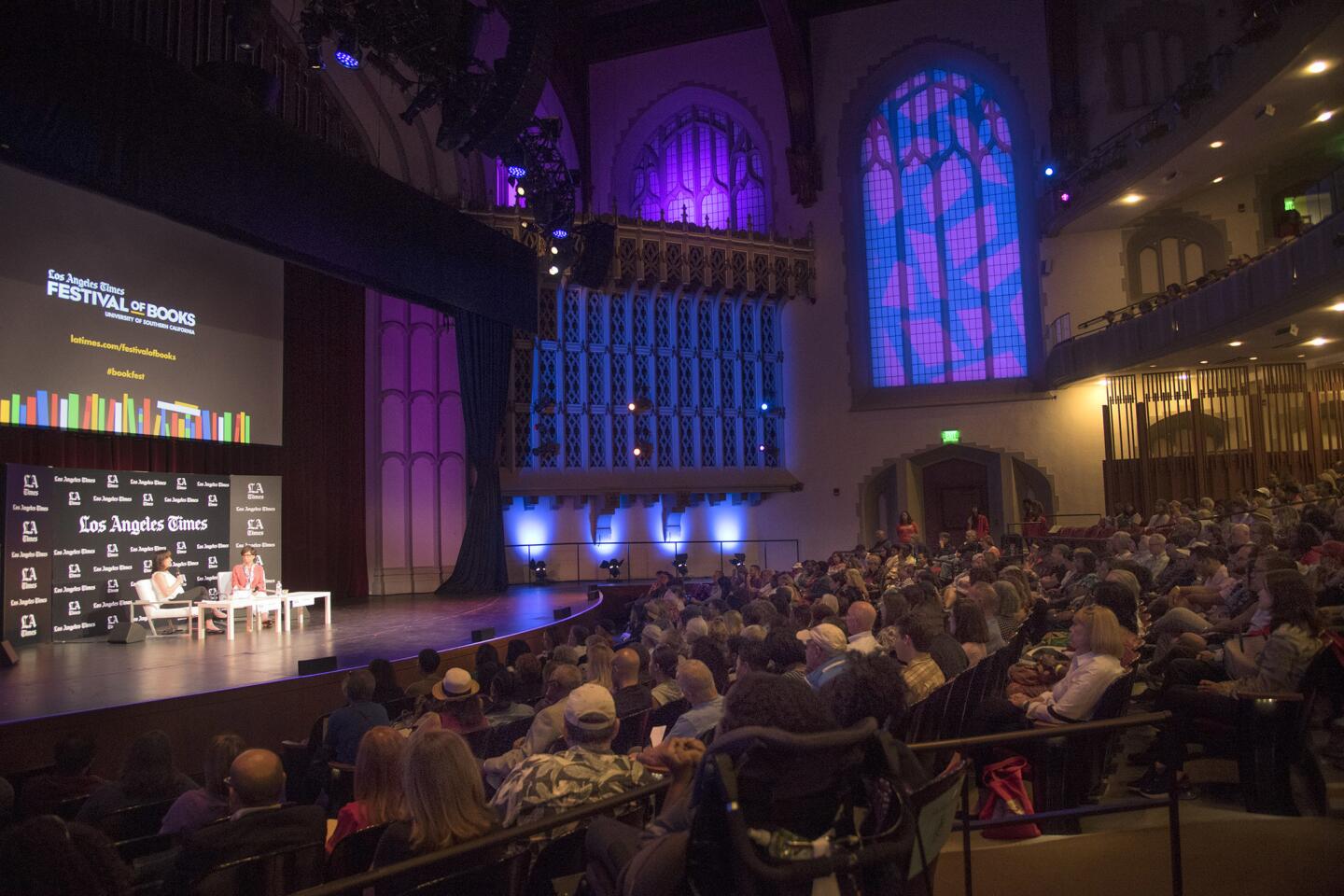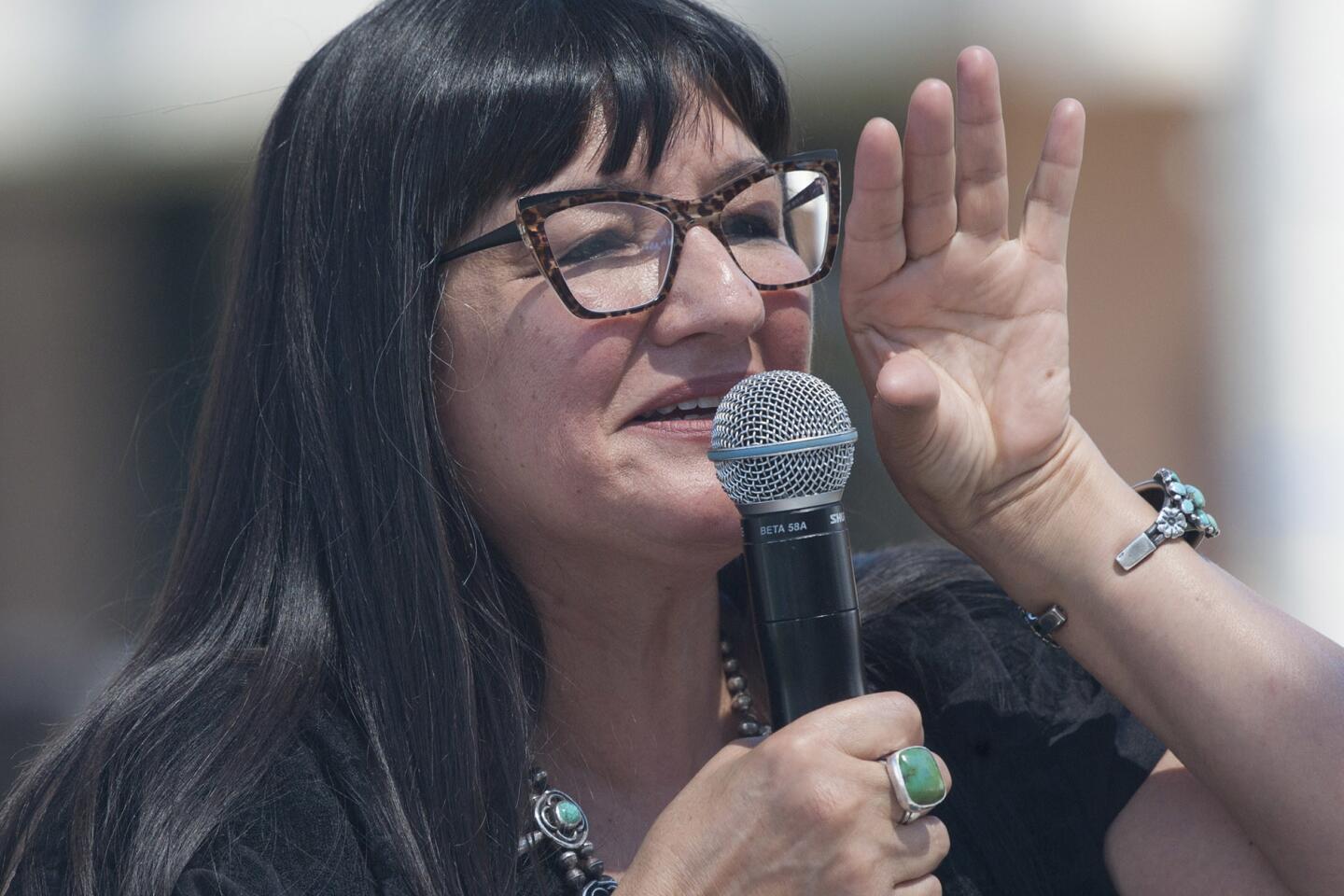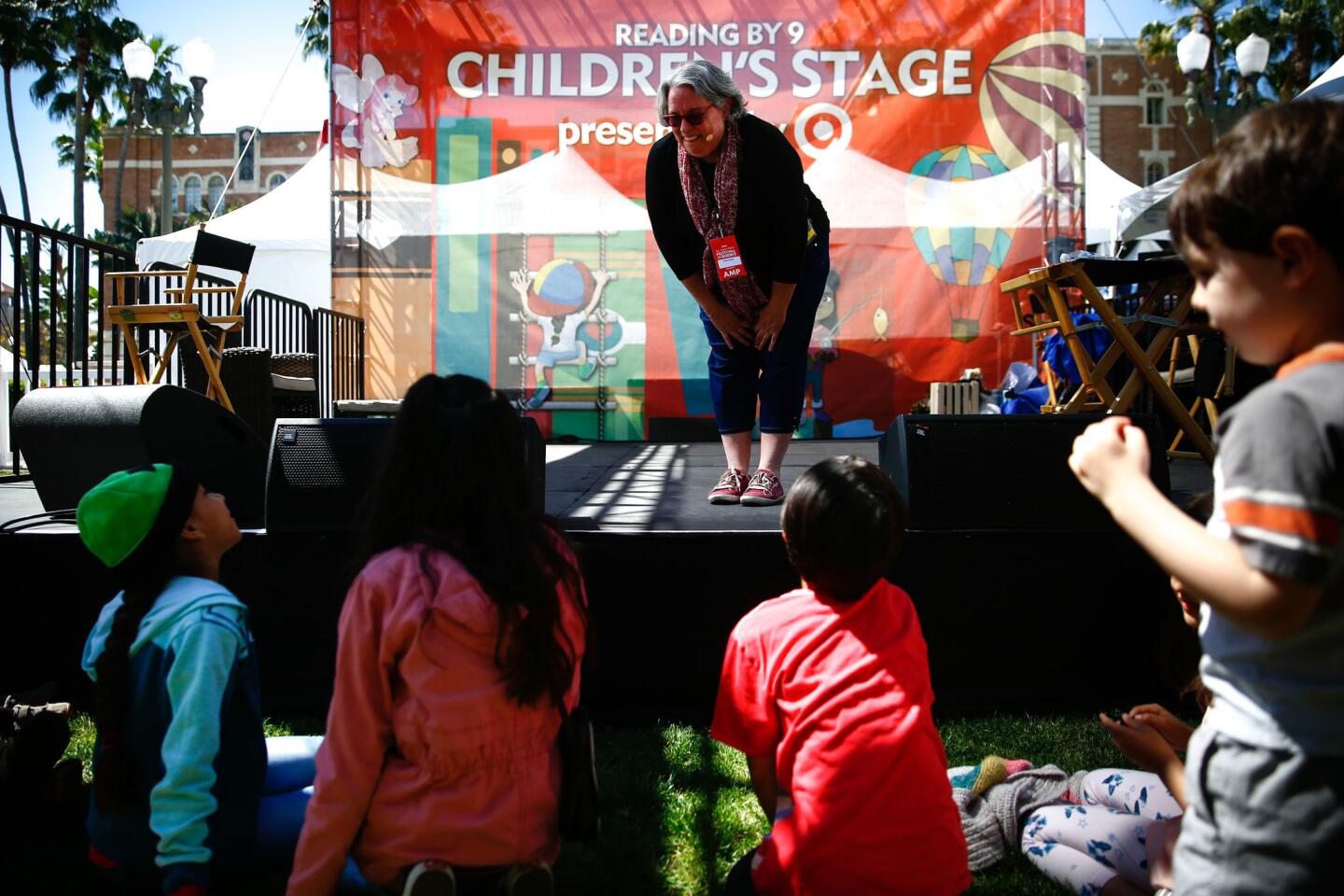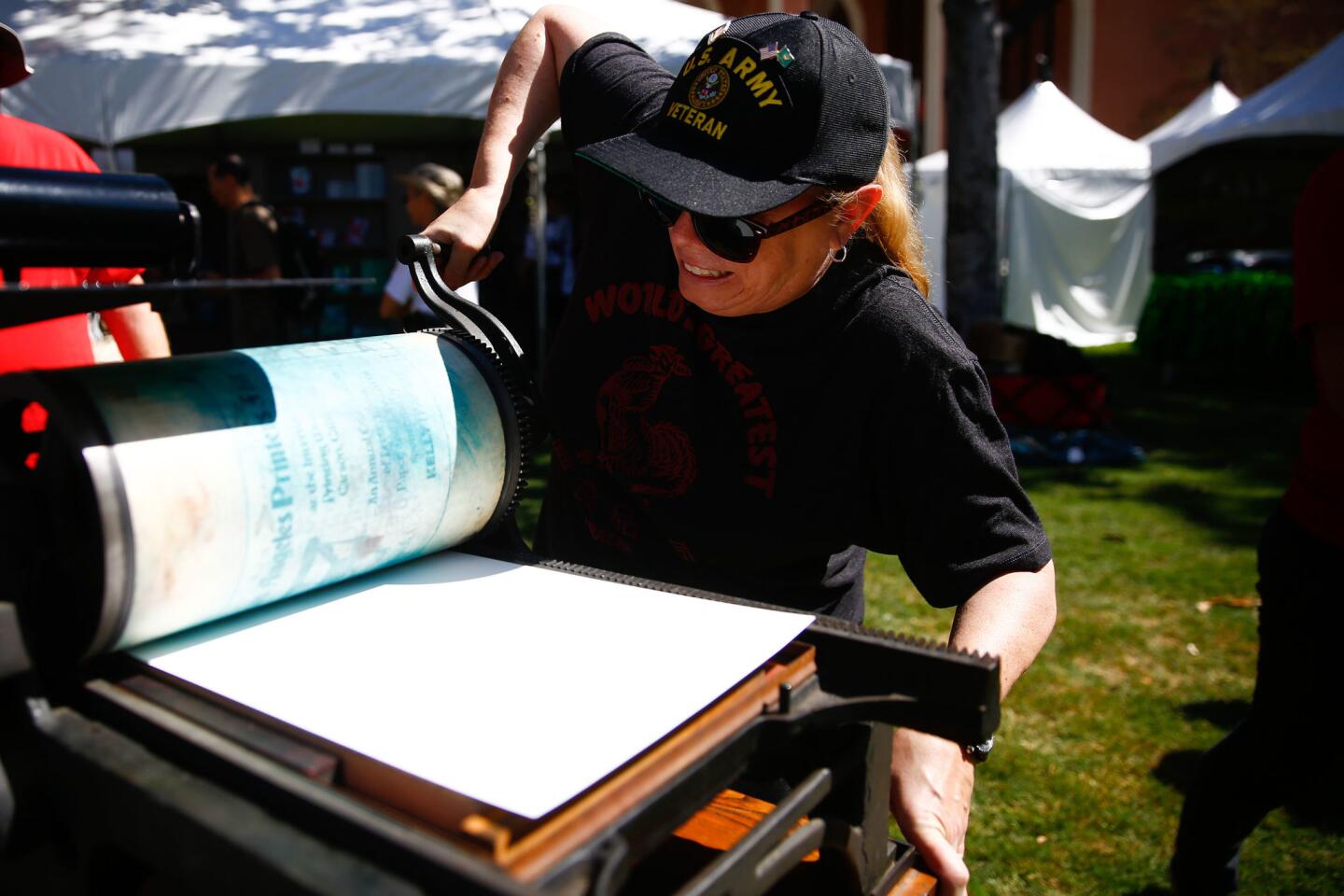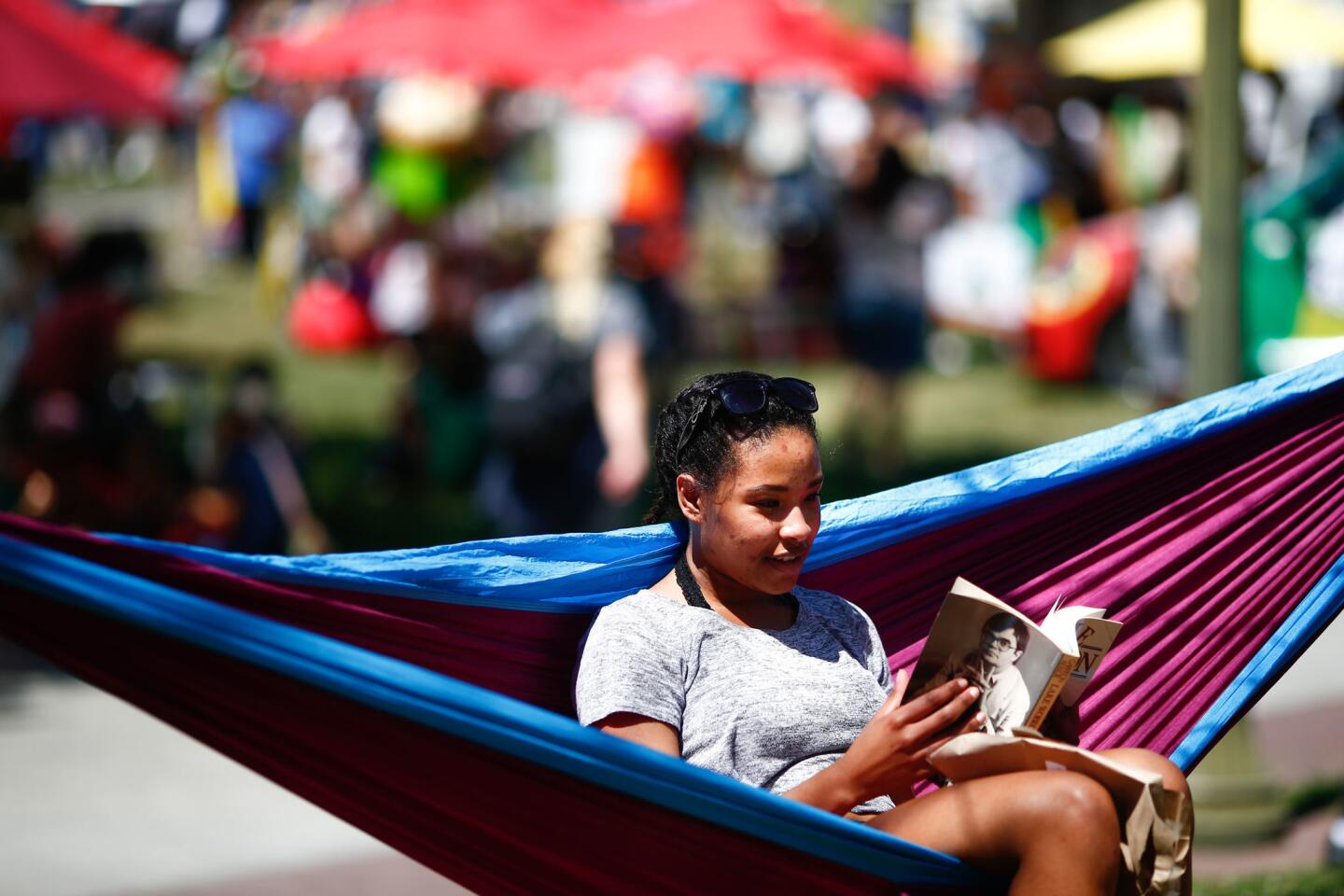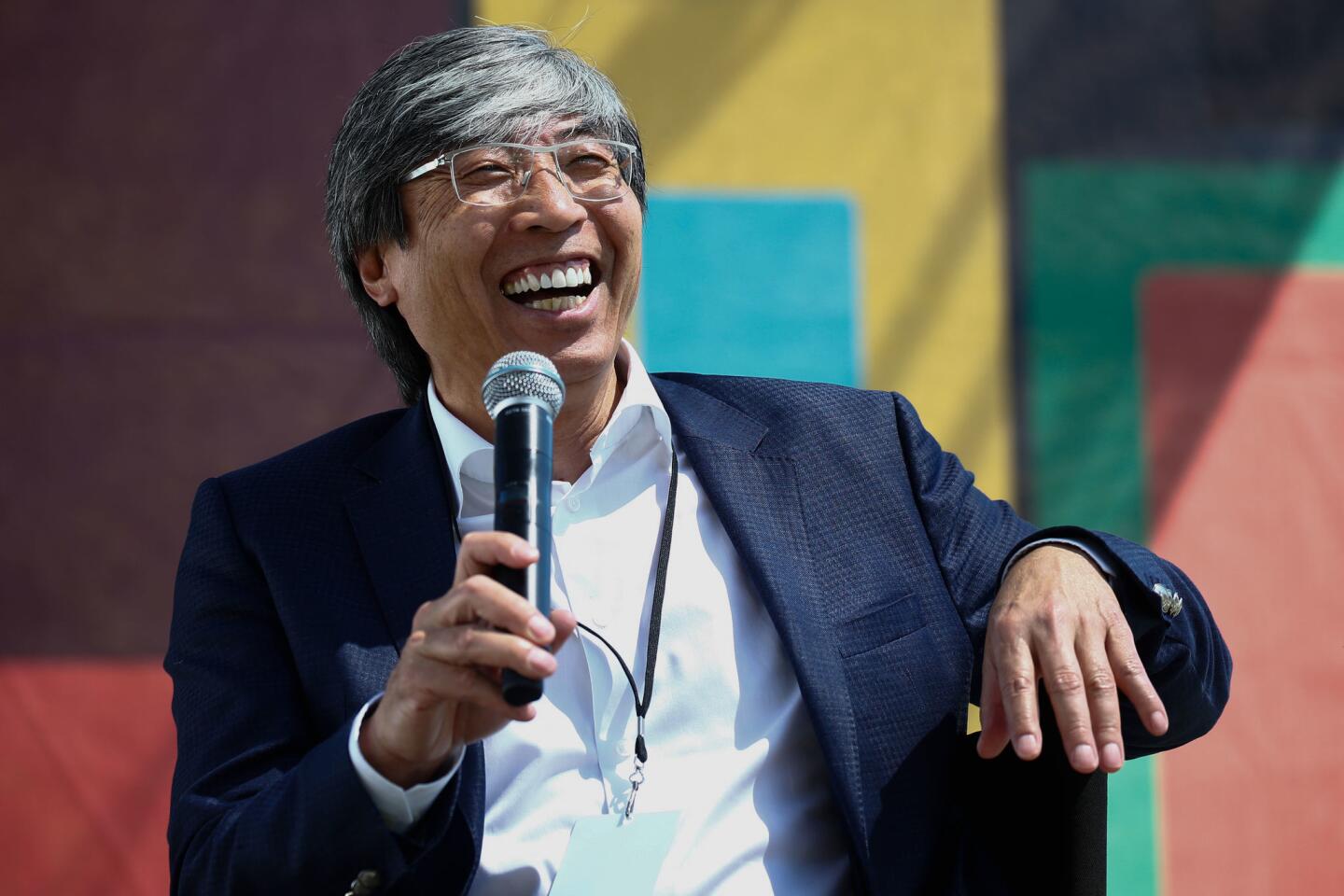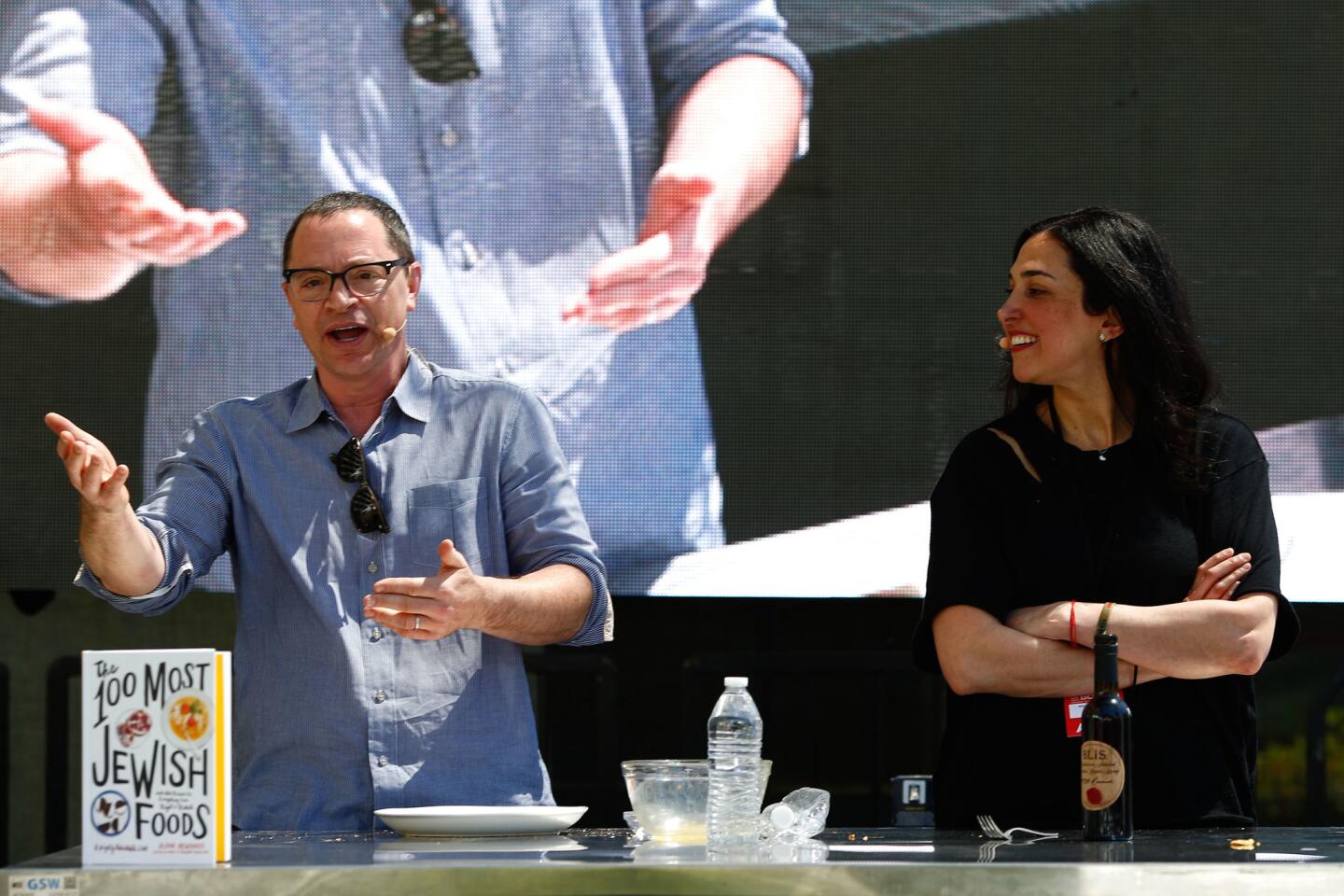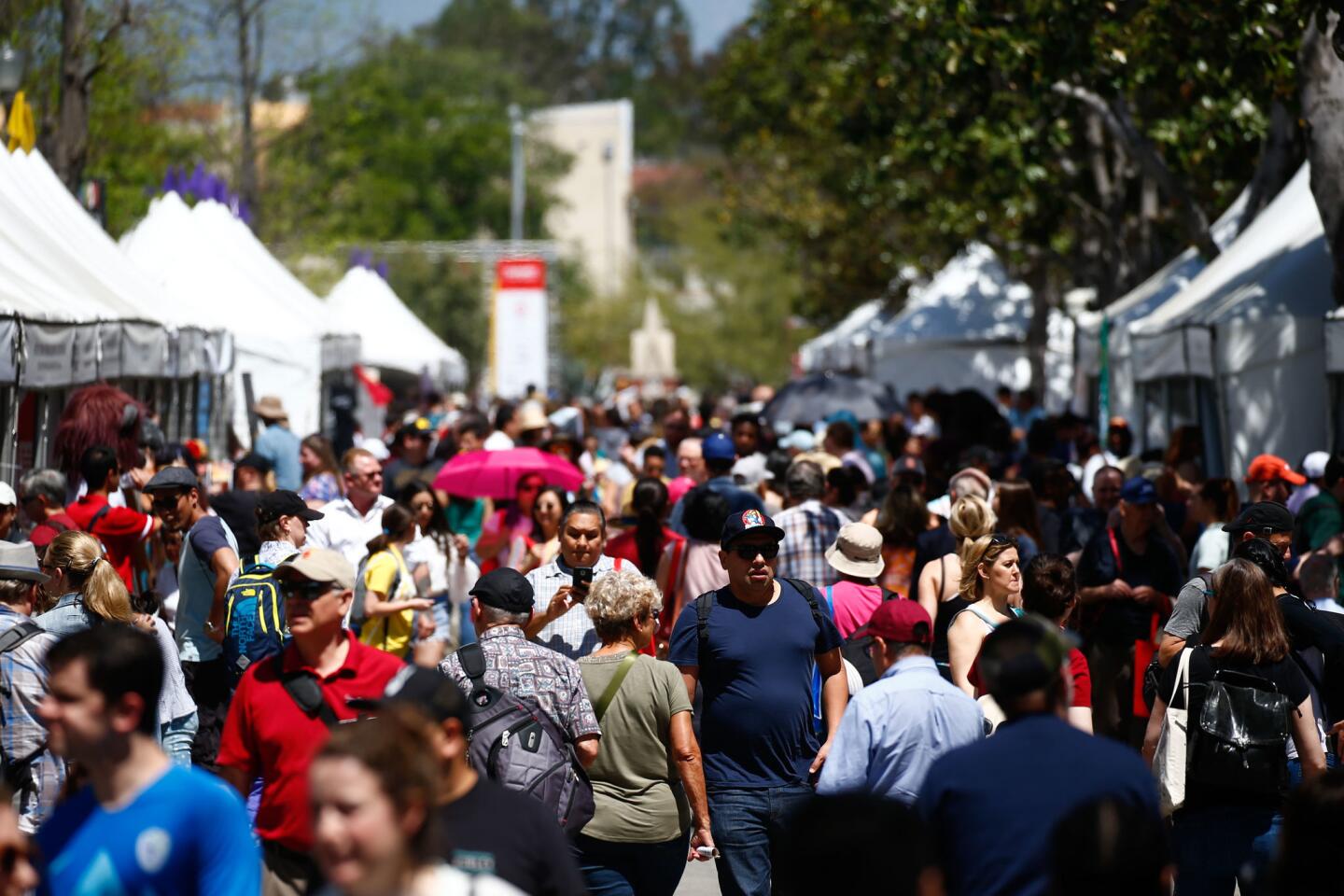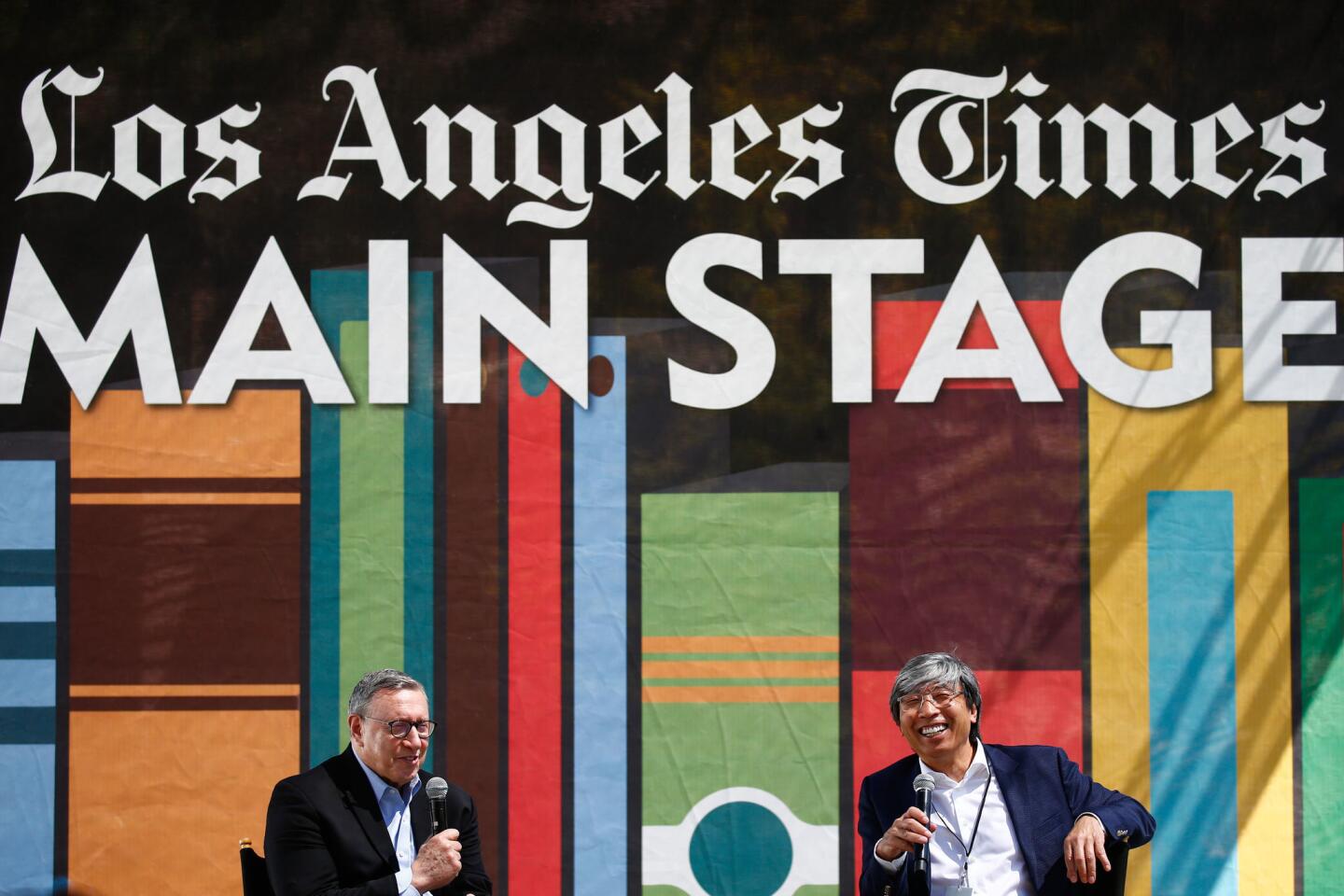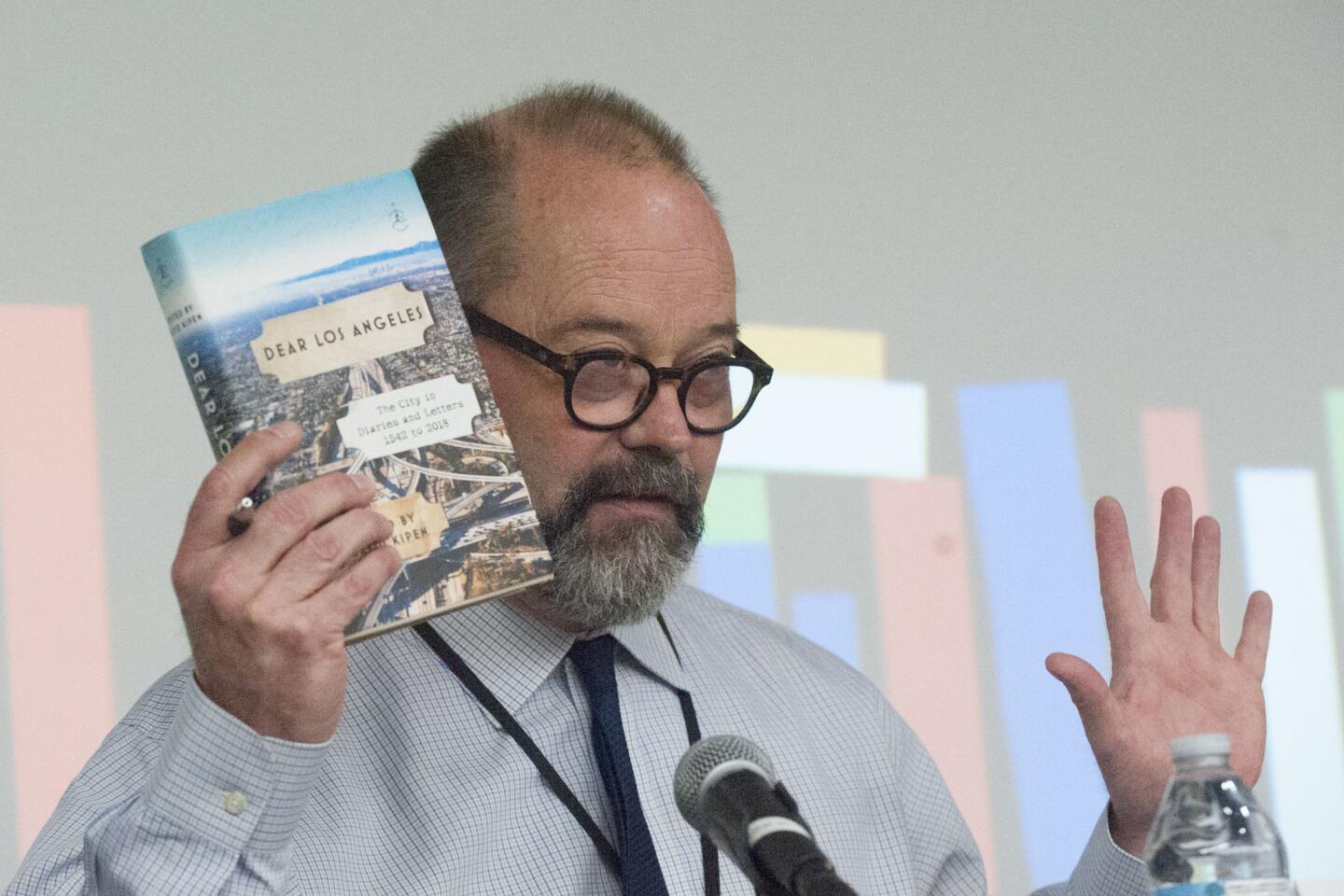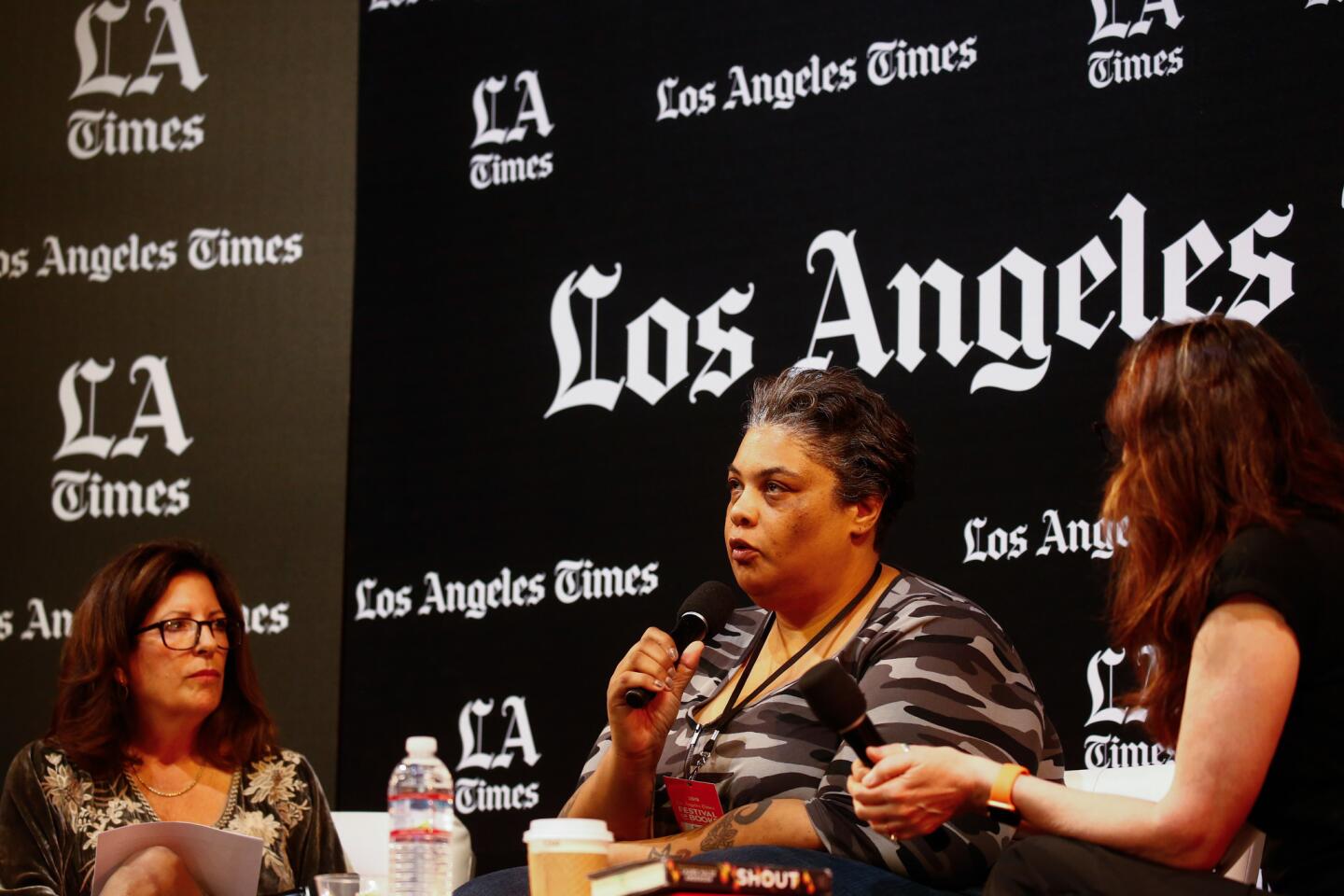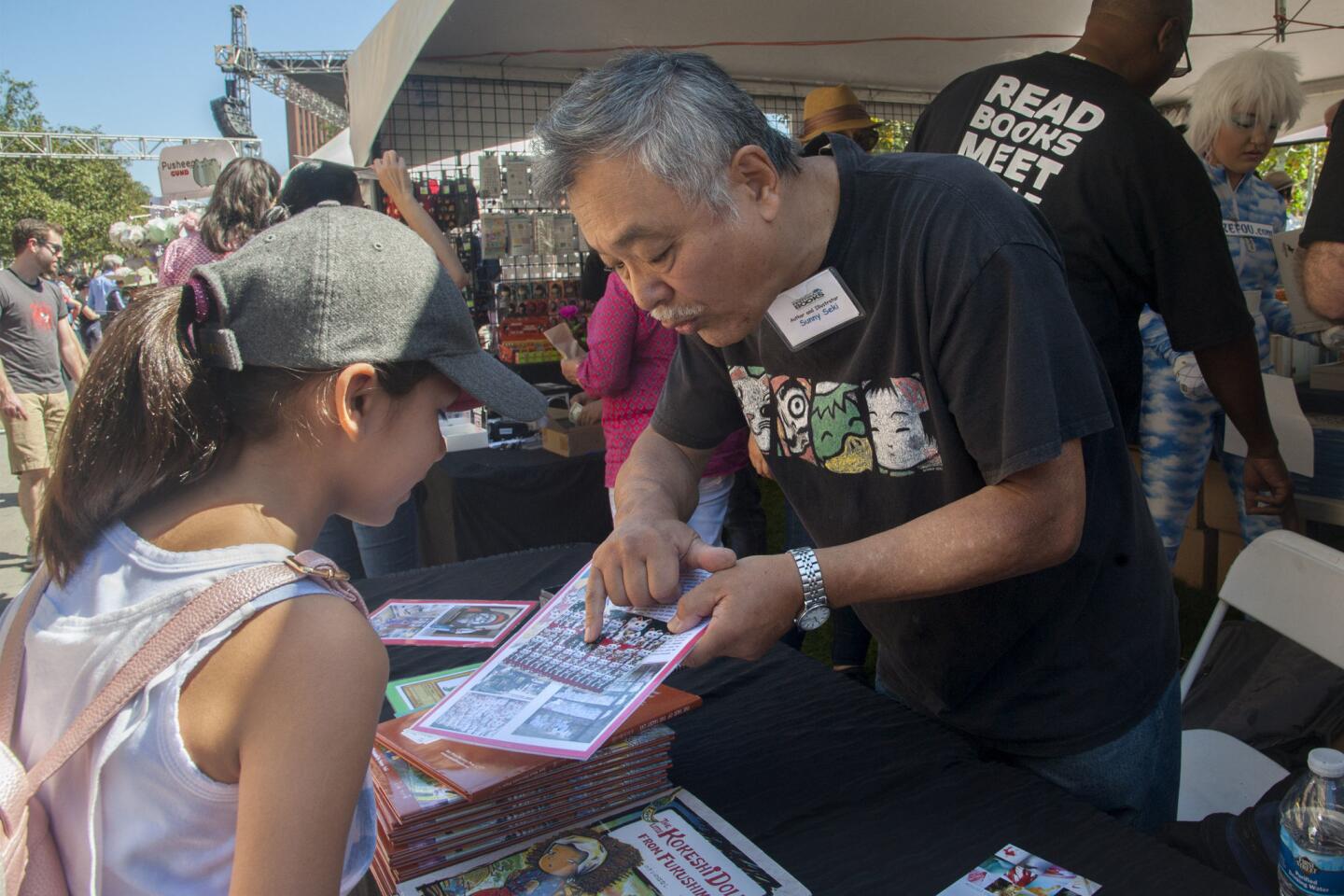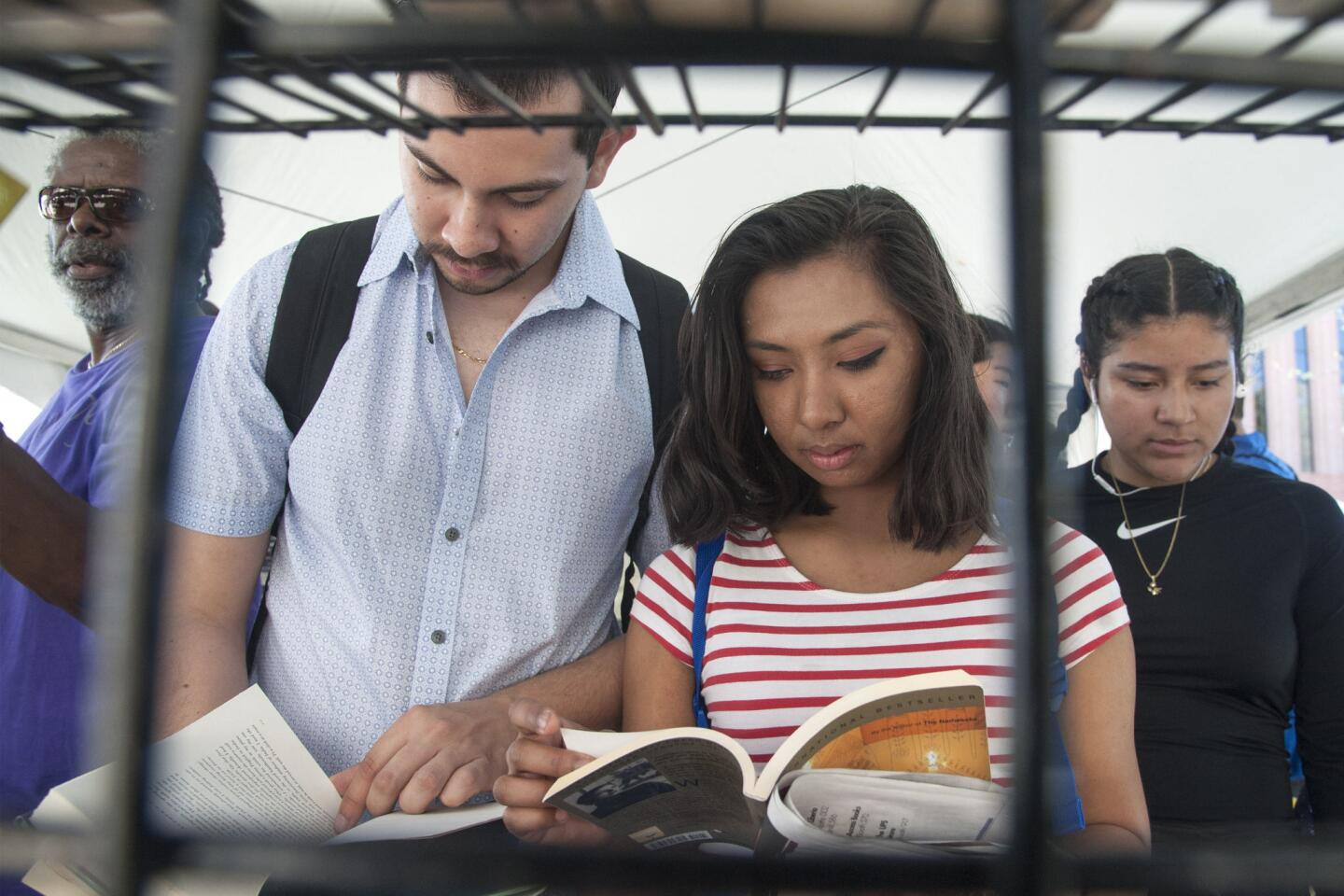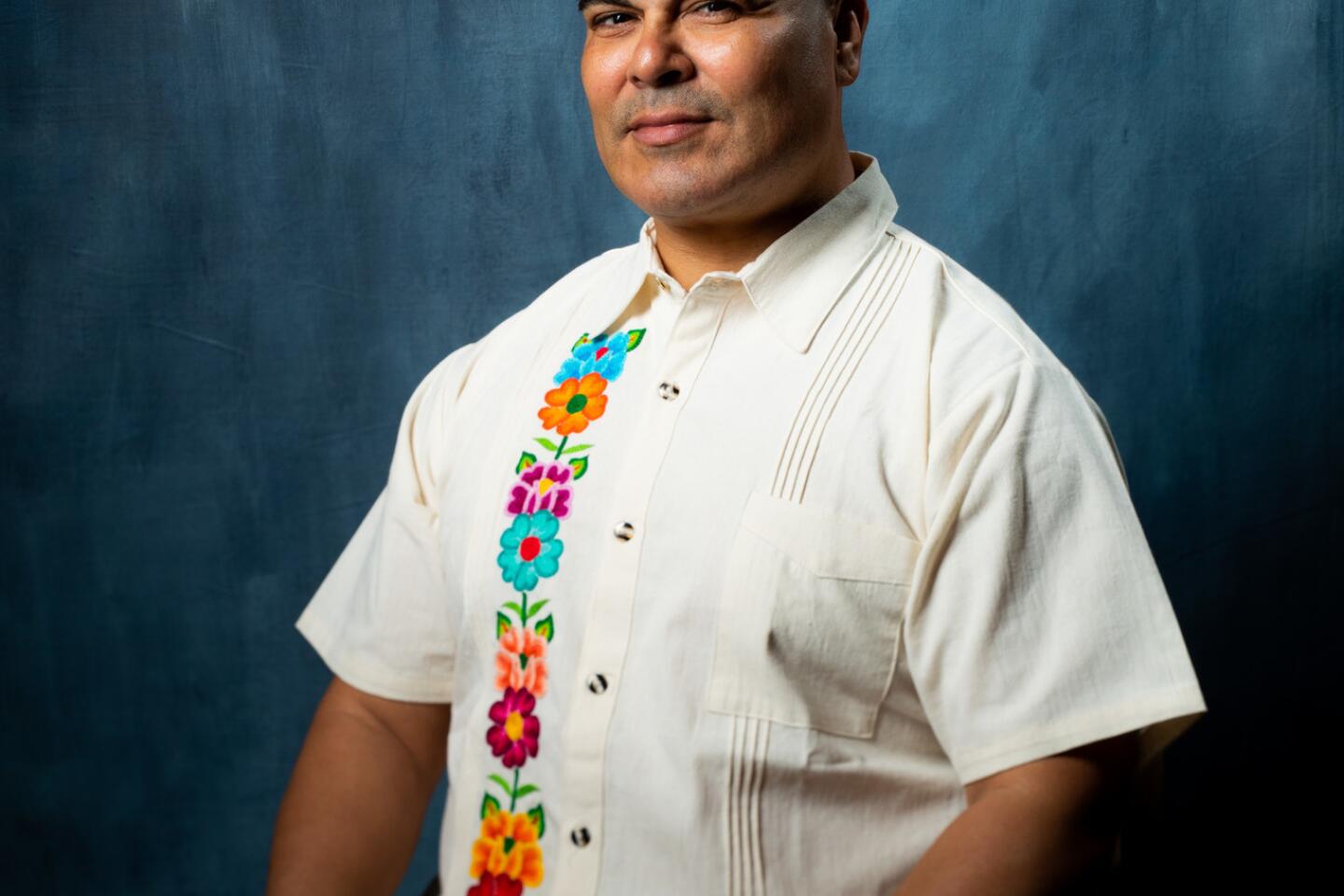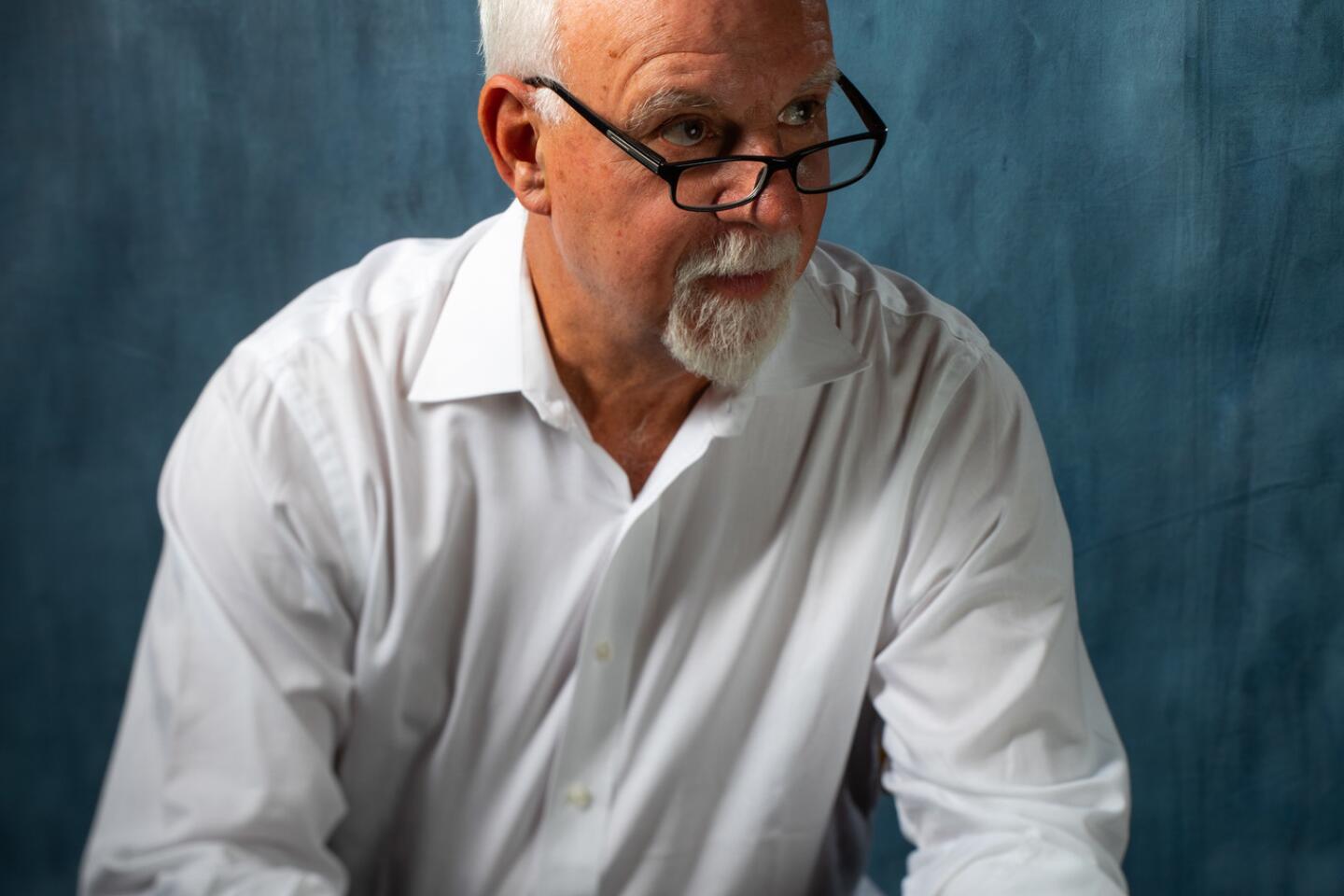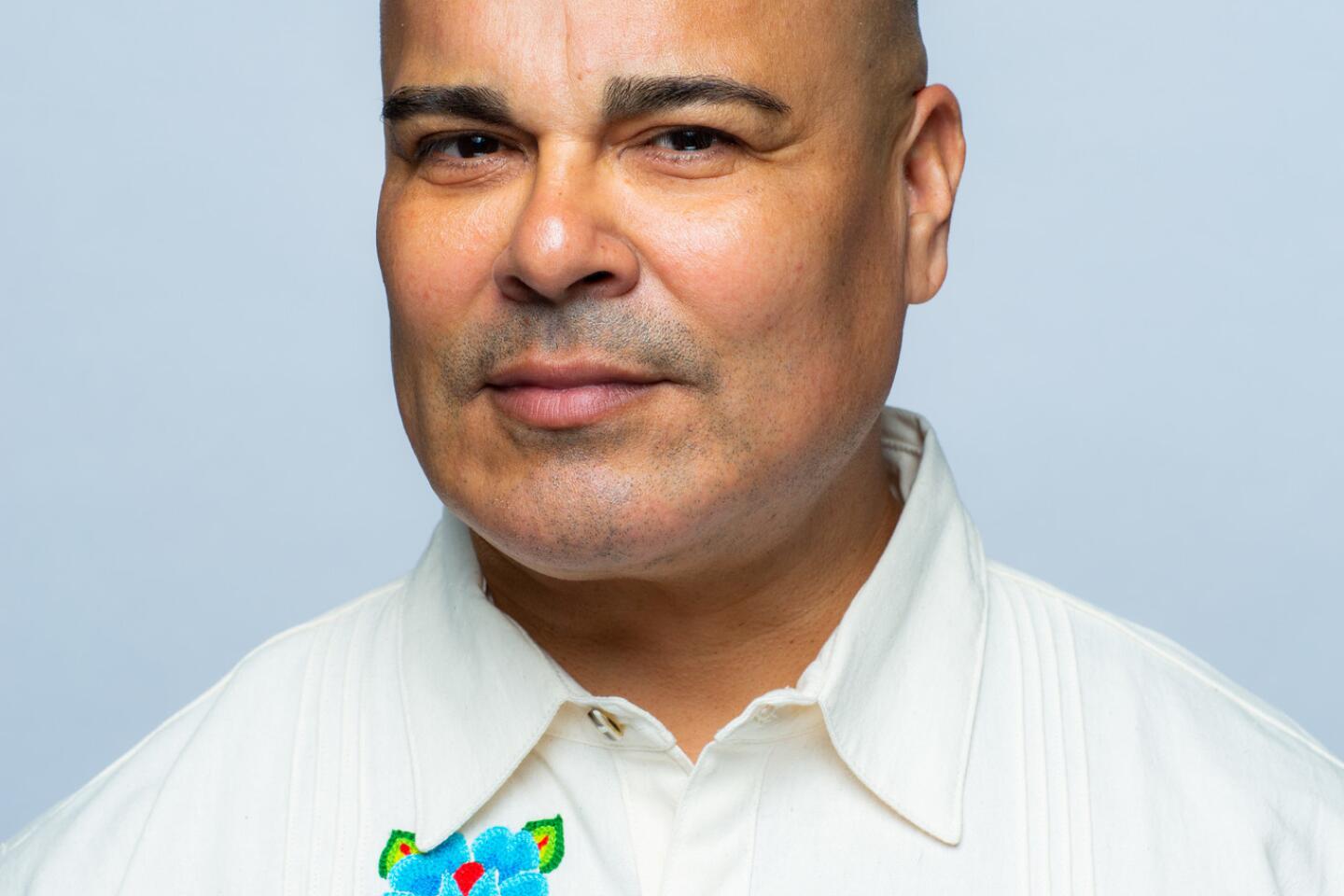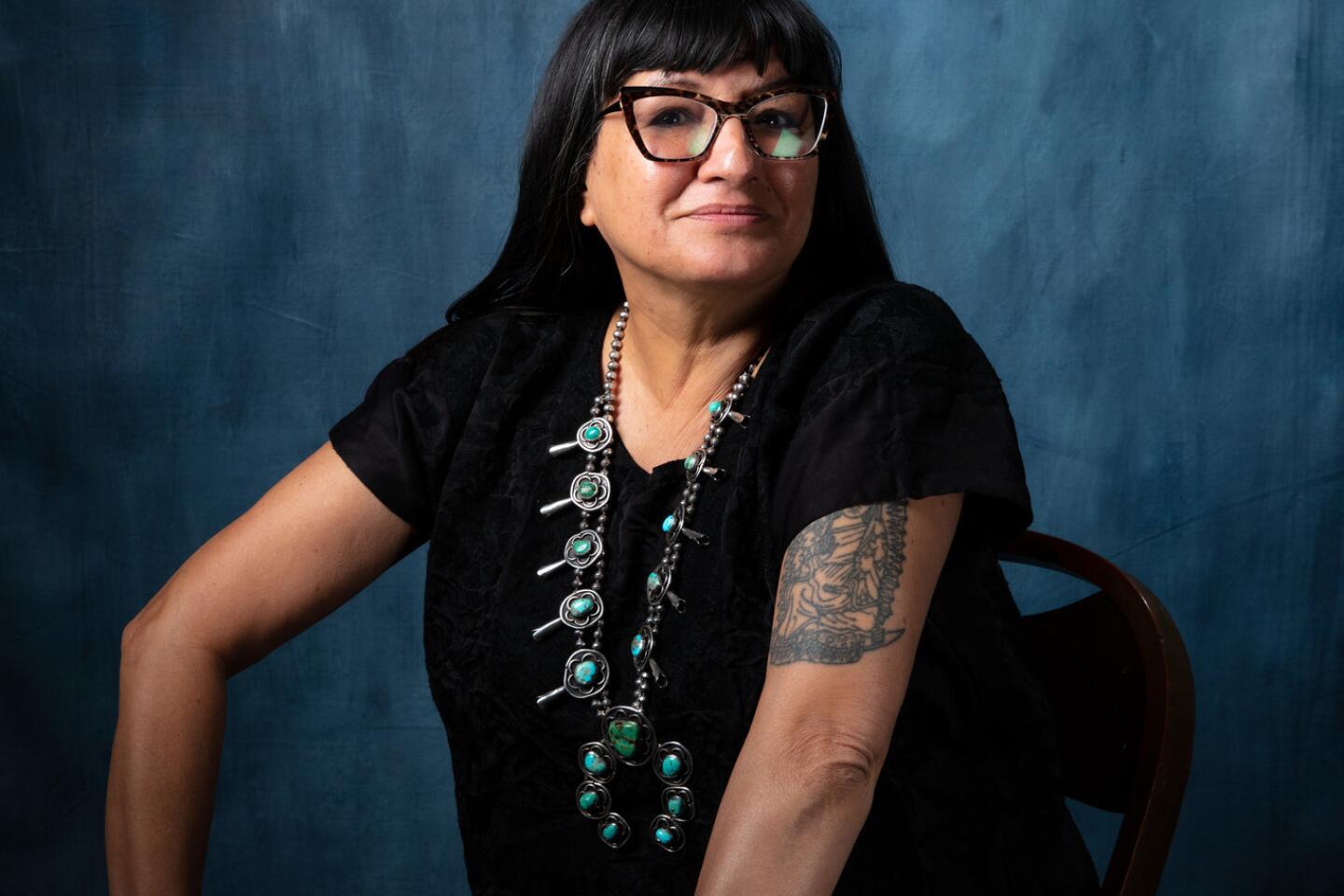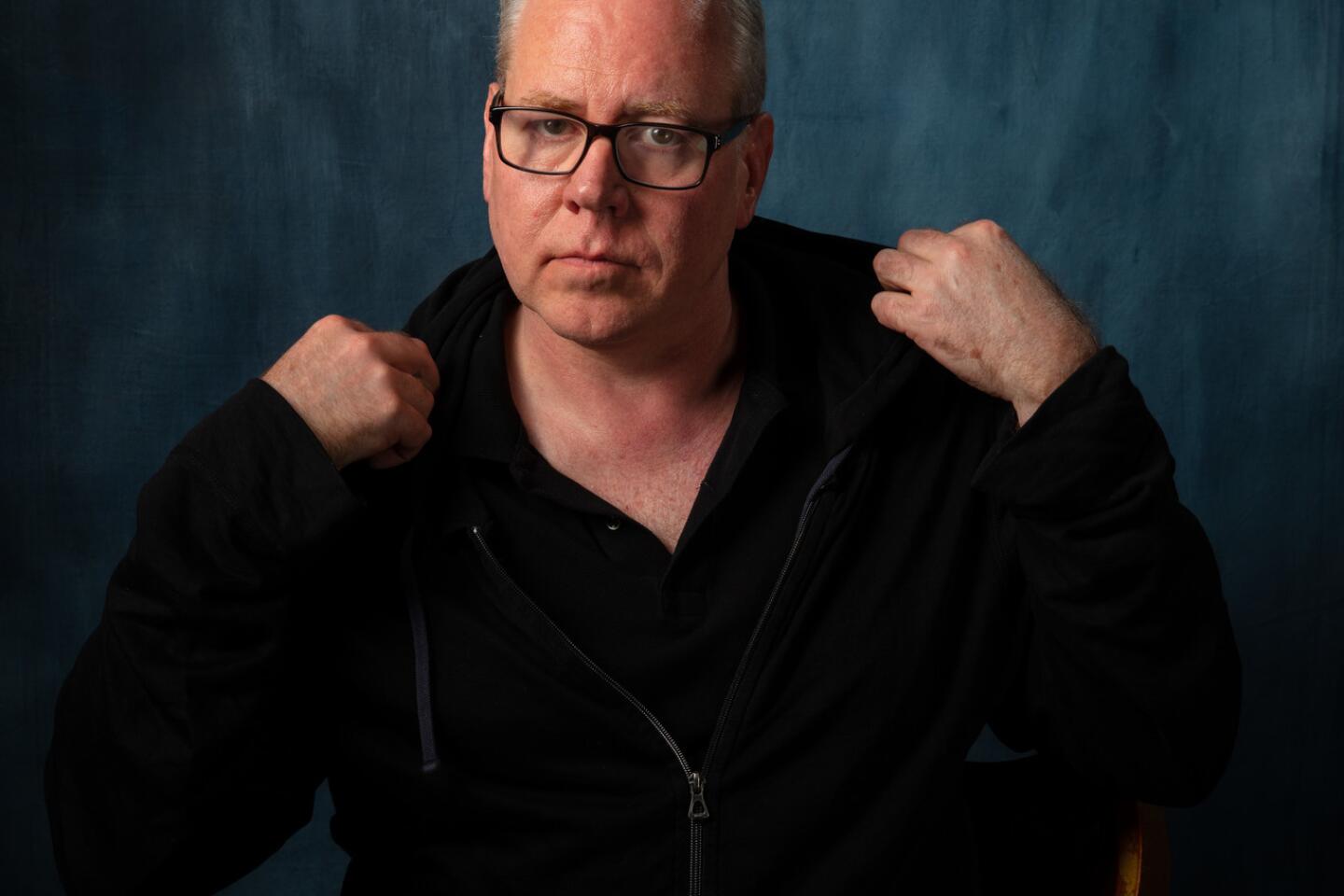In December 2013, 11 armed men identifying themselves as federal police broke into Anabel Hernández’s house on a day she happened to be out. The Mexican journalist had long faced threats for investigating her government’s ties to drug cartels but decided to finally leave the country, she writes in her book, “A Massacre in Mexico: The True Story Behind the Missing Forty-Three Students.”
She didn’t stay away for long. As a journalism fellow at UC Berkeley, Hernández became fixated on the September 2014 disappearance of 43 students who had been studying at a teachers’ college in Ayotzinapa, a rural town in southern Mexico.
These students and their peers had hijacked buses to attend a demonstration in Mexico City. They were intercepted by police, who began shooting at the buses and ultimately abducted 43 of the students. They were never seen again.
Mexican authorities under then-President Enrique Peña Nieto concluded that local police handed the students to a drug cartel that killed them and burned their bodies in a trash dump.
“When I started to read the news and I started to hear this version that the government was giving, I didn’t think it was logical,” Hernández told the The Times following a Spanish-language panel at the Los Angeles Times Festival of Books on Saturday about her book, which was published in English in 2018. “A small band of criminals takes the decision to attack these students?”
1/52
Get Lit — Words Ignite poet Khamal Iwvanyanwu shares his poetry with passersby at the Los Angeles Times Festival of Books at USC on Sunday. The group is based in Koreatown.
(Ana Venegas / For The Times) 2/52
Maria Recarte, of South Los Angeles, enjoys a Sunday afternoon with family and a book at the Los Angeles Times Festival of Books at USC.
(Ana Venegas / For The Times) 3/52
Lincoln Choi, 2, of Los Angeles shows his enthusiasm as members from the Urban Voices Project perform at the Los Angeles Times Festival of Books at USC on Sunday. The project includes current and former residents of skid row.
(Ana Venegas / For The Times) 4/52
Members of the Urban Voices Project, which includes current and former residents of skid row, perform at the Los Angeles Times Festival of Books at USC on Sunday.
(Ana Venegas / For The Times) 5/52
People walk around the USC campus at the Los Angeles Times Festival of Books on Sunday.
(Dania Maxwell / Los Angeles Times) 6/52
Markey Torres, 5, and Sophie Torres, 4, both of Los Angeles, make a book purchase at the Los Angeles Times Festival of Books at USC on Sunday. (Ana Venegas / For The Times)
7/52
Get Lit – Words Ignite poets C.E Oldham, from left, Tyris Winter, Khamal Iwvanyanwu and Mila Cudas break into a group poem for passersby at the Los Angeles Times Festival of Books at USC on Sunday.
(Ana Venegas / For The Times) 8/52
Times critic Mary McNamara, left, interviews former first daughter Chelsea Clinton, author of the children’s environment book “Don’t Let Them Disappear,” at the Los Angeles Times Festival of Books at USC on Sunday.
(Ana Venegas / For The Times) 9/52
Leo Barba, 4, watches family members try on paper mache heads at the Los Angeles Times Festival of Books at USC on Sunday. (Ana Venegas / For The Times)
10/52
Michelle Mauk, left, reads a pop-up book with her son Milo Armes, 6, during the Los Angeles Times Festival of Books at USC.
(Dania Maxwell / Los Angeles Times) 11/52
Former first daughter Chelsea Clinton, author of the children’s environment book “Don’t Let Them Disappear,” made an appearance at the Los Angeles Times Festival of Books at USC.
(Ana Venegas / For The Times) 12/52
UC President and former Secretary of Homeland Security Janet Napolitano discusses her book “How Safe Are We: Homeland Security Since 9/11” with L.A. Times Managing Editor Scott Kraft at the Festival of Books at USC on Sunday.
(Ana Venegas / For The Times) 13/52
Le Petit Cirque contortionist Lila Woodard, 13, of Santa Barbara folds herself into a clear box at the Los Angeles Times Festival of Books at USC on Sunday.
(Ana Venegas / For The Times) 14/52
Author and actress Amber Tamblyn, author of “Era of Ignition: Coming of Age in a Time of Rage and Revolution,” speaks during the annual Los Angeles Times Festival of Books held at USC.
(Dania Maxwell / Los Angeles Times) 15/52
Hasan Paul, 12, peeks into a book for sale during the annual Los Angeles Times Festival of Books.
(Dania Maxwell / Los Angeles Times) 16/52
People browse books for sale during the annual Los Angeles Times Festival of Books.
(Dania Maxwell / Los Angeles Times) 17/52
Justine Bateman, author of “Fame: The Hijacking of Reality,” is interviewed during the annual Los Angeles Times Festival of Books. (Dania Maxwell / Los Angeles Times)
18/52
Shiri Davy, left, with Stefani Bulsara, who wrote “Radio Gaga.” Bulsara wears a CD-covered dress to reflect the book’s musical theme at the independent author pavilion at the Los Angeles Times Festival of Books at USC.
(Ana Venegas / For The Times) 19/52
Kevin Tominaga holds his daughters Lana and Kaya Tominaga, left and right, who watch USC’s band perform during the annual Los Angeles Times Festival of Books.
(Dania Maxwell / Los Angeles Times) 20/52
Samantha Ruzon, of USC’s Color Guard, performs during the annual Los Angeles Times Festival of Books.
(Dania Maxwell / Los Angeles Times) 21/52
Fernando Grimaldo and Elaine Karaelias relax with a copy of “Inca Gods and Aliens” by Bruce Noon at the Los Angeles Festival of Books at USC.
(Ana Venegas / For The Times) 22/52
Mexican journalist and author Anabel Hernandez talks about “A Massacre In Mexico: The True Story Behind the Missing Forty-Three Students,” at the Los Angeles Times Festival of Books at USC.
(Ana Venegas / For The Times) 23/52
Molly Ash, right, tidies the books at the Book Soup booth at the Los Angeles Times Festival of Books at USC.
(Ana Venegas / For The Times) 24/52
Indie musician Maddie Ross performs at the USC stage at the Los Angeles Festival of Books at USC.
(Ana Venegas / For The Times) 25/52
Biani Martinez Romero, 8, of Los Angeles, watches a virtual-reality movie at the Save L.A. Cougars booth at the Festival of Books at USC.
(Ana Venegas / For The Times) 26/52
Times columnists Chris Erskine, from left, Robin Abcarian, Steve Lopez and Frank Shyong speak on a panel during the L.A. Times Festival of Books.
(Kent Nishimura / Los Angeles Times) 27/52
Valerie Jarrett, former White House senior advisor to President Obama and author of “Finding My Voice,” is interviewed by the Times’ White House editor Jackie Calmes at the L.A. Times Ideas Exchange during the Festival of Books.
(Ana Venegas / For The Times) 28/52
Jostin Soto Garcia reads a wall of comments at the L.A. Times Festival of Books at USC.
(Kent Nishimura / Los Angeles Times) 29/52
People pack the USC campus at the L.A. Times Festival of Books.
(Kent Nishimura / Los Angeles Times) 30/52
Erica Reyes, of Silverlake, reads “Death Wins a Goldfish,” at the L.A. Times Festival of Books at USC.
(Kent Nishimura / Los Angeles Times) 31/52
Hanif Abdurraqib, center, speak during the “Drop the Beat: Writing About Music” panel along with Greg Mack, Times writer Gerrick D. Kennedy and Will Ashton at the annual L.A. Times Festival of Books.
(Kent Nishimura / Los Angeles Times) 32/52
Valerie Jarrett, former senior White House advisor under President Obama and author of “Finding My Voice,” is interviewed by Times’ White House editor Jackie Calmes at the L.A. Times Ideas Exchange during the Festival of Books at USC.
(Ana Venegas / For The Times) 33/52
Attendees laugh with Sandra Cisneros during her appearance at the Festival of Books on Saturday at USC.
(Ana Venegas / For The Times) 34/52
Author Sandra Cisneros drew a crowd during her appearance at the Festival of Books on Saturday at USC.
(Ana Venegas / For The Times) 35/52
Noah McCown, 3, of Glendale, gets a kiss from a marionette during the Festival of Books on Saturday at USC.
(Ana Venegas / For The Times) 36/52
Sophia Tesfalem, 12, gets her face painted by USC Public Safety Cadet Amy Ramirez, 14, during the Los Angeles Times Festival of Books on Saturday at USC.
(Kent Nishimura / Los Angeles Times) 37/52
Sisters Mia and Diana Palma peruse books for sale during the annual Los Angeles Times Festival of Books on Saturday at USC.
(Kent Nishimura / Los Angeles Times) 38/52
Lili Anolik, author of “Hollywood’s Eve,” takes part in a panel discussion titled “Los Angeles: The People and Places” during the Los Angeles Times Festival of Books on Saturday at USC.
(Ana Venegas / For The Times) 39/52
Jonah Legere, and Shannon Legere of Long Beach read “Pete the Cat and the Missing Cupcakes,” together during the annual Los Angeles Times Festival of Books at University of Southern California on Saturday, April 13, 2019 in Los Angeles, Calif. (Kent Nishimura / Los Angeles Times)
40/52
People pack the USC campus for the L.A. Times Festival of Books on Saturday.
(Kent Nishimura / Los Angeles Times) 41/52
Author Andrea Beaty takes questions from children in the audience at the L.A. Times Festival of Books at USC on Saturday.
(Kent Nishimura / Los Angeles Times) 42/52
Judi Rivera of Whittier operates a printing press making a copy of the first issue of the Los Angeles Daily Times at the L.A. Times Festival of Books at USC on Saturday.
(Kent Nishimura / Los Angeles Times) 43/52
USC student Caroline Sharp, 19, opens a book she just purchased at the L.A. Times Festival of Books on the USC campus Saturday.
(Kent Nishimura / Los Angeles Times) 44/52
Dr. Patrick Soon-Shiong, owner of the Los Angeles Times, speaks at the L.A. Times Festival of Books at USC on Saturday.
(Kent Nishimura / Los Angeles Times) 45/52
Actor Joshua Molina and Alana Newhouse, author of the cookbook “The 100 Most Jewish Foods: A Highly Debatable List,” at the L.A. Times Festival of Books at USC on Saturday.
(Kent Nishimura / Los Angeles Times) 46/52
Children are mesmerized as a figure from the Bob Baker Marionette Theatre performs at the L.A. Times Festival of Books at USC on Saturday.
(Kent Nishimura / Los Angeles Times) 47/52
People pack the L.A. Times Festival of Books at USC on Saturday.
(Kent Nishimura / Los Angeles Times) 48/52
Los Angeles Times owner Dr. Patrick Soon-Shiong, right, and executive editor Norm Pearlstine on the main stage at the L.A. Times Festival of Books at USC on Saturday.
(Kent Nishimura / Los Angeles Times) 49/52
William Deverell leads a panel discussion titled “Los Angeles: The People and Places That Shaped a City” at the L.A. Times Festival of Books at USC on Saturday.
(Ana Venegas / For The Times) 50/52
Times columnist Robin Abcarian, left, speaks with authors Roxane Gay and Laurie Halse Anderson at the Bovard Auditorium during the annual Los Angeles Times Festival of Books at USC.
(Kent Nishimura / Los Angeles Times) 51/52
Japanese author and illustrator Sunny Seki talks with Jade Monge, 10, at the L.A. Times Festival of Books at USC on Saturday.
(Ana Venegas / For The Times) 52/52
Andrew Sanchez of Los Angeles and Misha Ponnuraju of San Bernadino browse the shelvesat the L.A. Times Festival of Books at USC on Saturday.
(Ana Venegas / For The Times) Despite the risk, Hernández returned to Mexico every month for two years to investigate the case. Hernández’s book and reports from international investigators contend that the government conducted a flawed investigation based on testimonies from tortured suspects.
While the government claimed that only local officials were involved in the attack, Hernández writes in her book that federal police knew of the initial assault against the students as it was happening. During the book festival talk, she raised a motive for the massacre: The students had unwittingly hijacked two buses carrying millions of dollars’ worth of heroin. A military operation was ordered to recover the drugs following orders from a mafia leader.
“This case is emblematic because it shows, No. 1, the method of forced disappearance that exists in Mexico,” she said.
Mexican President Andres Manuel Lopez Obrador in December announced the creation of a truth commission to re-investigate the case. Mexico’s violence continues to increase, with 2019 looking like it may be the most violent in Mexico’s modern history, on track to exceed last year’s 33,369 killings.
Tatiana Estrada, an audience member of Hernández’s L.A. Times En Español stage panel at USC, asked Hernández how the Mexican diaspora should respond to the constant violence.
“What should citizens do?” she asked. “Living here, we also have to participate.”
Hernández reminded her that after the massacre, Mexicans around the world had burst into protest.
“We need to raise our collective voice, saying, ‘Hey, government, we haven’t forgotten the 43 — we want to know what happened, where they are,” she said. “We want the responsible in jail.”
1/42
Author of “He Said, She Said: Lessons, Stories, and Mistakes From My Transgender Journey,” Gigi Gorgeous is photographed in the Los Angeles Times Festival of Books photo studio at USC.
(Jay L. Clendenin / Los Angeles Times) 2/42
Author Lilliam Rivera in the Los Angeles Times Festival of Books photo studio at USC.
(Jay L. Clendenin / Los Angeles Times) 3/42
Jericho Brown, author of “The Tradition,” in the Los Angeles Times Festival of Books photo studio at USC.
(Jay L. Clendenin / Los Angeles Times) 4/42
Author Janet Fitch in the Los Angeles Times Festival of Books photo studio at USC.
(Jay L. Clendenin / Los Angeles Times) 5/42
Author Lilliam Rivera in the L.A. Times Festival of Books photo studio at USC.
(Jay L. Clendenin / Los Angeles Times) 6/42
Author of “The Tradition,” Jericho Brown, in the L.A. Times Festival of Books photo studio at USC.
(Jay L. Clendenin / Los Angeles Times) 7/42
Author of “The Book of Ruin,” Rigoberto Gonzalez, in the L.A. Times Festival of Books photo studio at USC.
(Jay L. Clendenin / Los Angeles Times) 8/42
Author Kwame Alexander at the L.A. Times Festival of Books photo studio at USC.
(Jay L. Clendenin / Los Angeles Times) 9/42
Author and Los Angeles Times columnist Patt Morrison at the L.A. Times Festival of Books photo studio at USC.
(Jay L. Clendenin / Los Angeles Times) 10/42
Author Ruth Reichl at the L.A. Times Festival of Books photo studio at USC.
(Jay L. Clendenin / Los Angeles Times) 11/42
Author and Times columnist Steve Lopez at the L.A. Times Festival of Books photo studio at USC.
(Jay L. Clendenin / Los Angeles Times) 12/42
Author Kwame Alexander at the L.A. Times Festival of Books photo studio at USC.
(Jay L. Clendenin / Los Angeles Times) 13/42
Rigoberto Gonzalez, author of “The Book of Ruin,” in the L.A. Times Festival of Books photo studio at USC.
(Jay L. Clendenin / Los Angeles Times) 14/42
Author Ruth Reichl at the L.A. Times Festival of Books photo studio at USC.
(Jay L. Clendenin / Los Angeles Times) 15/42
Author of “He Said, She Said: Lessons, Stories, and Mistakes from My Transgender Journey,” Gigi Gorgeous is photographed in the L.A. Times Festival of Books photo studio, at USC.
(Jay L. Clendenin / Los Angeles Times) 16/42
Author Susan Orlean in the L.A. Times Festival of Books photo studio, at USC.
(Jay L. Clendenin / Los Angeles Times) 17/42
Author Don Winslow in the L.A. Times Festival of Books photo studio, at USC.
(Jay L. Clendenin / Los Angeles Times) 18/42
Author Janet Fitch in the L.A. Times Festival of Books photo studio at USC.
(Jay L. Clendenin / Los Angeles Times) 19/42
Author Susan Orlean in the L.A. Times Festival of Books photo studio, at USC.
(Jay L. Clendenin / Los Angeles Times) 20/42
Author Sandra Cisneros in the L.A. Times Festival of Books photo studio at USC.
(Jay L. Clendenin / Los Angeles Times) 21/42
Author Dave Barry in the L.A. Times Festival of Books photo studio, at USC.
(Jay L. Clendenin / Los Angeles Times) 22/42
Author Damon Young in the L.A. Times Festival of Books photo studio, at USC.
(Jay L. Clendenin / Los Angeles Times) 23/42
Author Dave Barry in the L.A. Times Festival of Books photo studio, at USC.
(Jay L. Clendenin / Los Angeles Times) 24/42
Author Sandra Cisneros in the L.A. Times Festival of Books photo studio at USC.
(Jay L. Clendenin / Los Angeles Times) 25/42
Author Damon Young in the L.A. Times Festival of Books photo studio, at USC.
(Jay L. Clendenin / Los Angeles Times) 26/42
Author Karamo Brown is photographed in the L.A. Times Festival of Books photo studio, at USC. (Jay L. Clendenin / Los Angeles Times)
27/42
Author Marcellus Wiley is photographed in the L.A. Times Festival of Books photo studio, at USC. (Jay L. Clendenin / Los Angeles Times)
28/42
Author Adam Higginbotham is photographed in the L.A. Times Festival of Books photo studio, at USC. (Jay L. Clendenin / Los Angeles Times)
29/42
Author Karamo Brown is photographed in the L.A. Times Festival of Books photo studio, at USC. (Jay L. Clendenin / Los Angeles Times)
30/42
Illustrator of the children’s series “Fancy Nancy,” Robin Preiss Glasser is photographed in the L.A. Times Festival of Books photo studio at USC.
(Jay L. Clendenin / Los Angeles Times) 31/42
Author Cory Doctorow is photographed in the L.A. Times Festival of Books photo studio at USC.
(Jay L. Clendenin / Los Angeles Times) 32/42
Author Bret Easton Ellis is photographed in the L.A. Times Festival of Books photo studio at USC.
(Jay L. Clendenin / Los Angeles Times) 33/42
Author Henry Thomas is photographed in the L.A. Times Festival of Books photo studio at USC.
(Jay L. Clendenin / Los Angeles Times) 34/42
Author Yesika Salgado is photographed in the L.A. Times Festival of Books photo studio at USC.
(Jay L. Clendenin / Los Angeles Times) 35/42
Illustrator of the children’s series “Fancy Nancy,” Robin Preiss Glasser is photographed in the L.A. Times Festival of Books photo studio at USC.
(Jay L. Clendenin / Los Angeles Times) 36/42
Author Maurene Goo is photographed in the L.A. Times Festival of Books photo studio at USC.
(Jay L. Clendenin / Los Angeles Times) 37/42
Author Bret Easton Ellis is photographed in the L.A. Times Festival of Books photo studio at USC.
(Jay L. Clendenin / Los Angeles Times) 38/42
Author Laila Lalami is photographed in the L.A. Times Festival of Books photo studio at USC.
(Jay L. Clendenin / Los Angeles Times) 39/42
Author Jasmine Guillory is photographed in the L.A. Times Festival of Books photo studio at USC.
(Jay L. Clendenin / Los Angeles Times) 40/42
Author Glory Edim is photographed in the L.A. Times Festival of Books photo studio, at USC. (Jay L. Clendenin / Los Angeles Times)
41/42
Author T.C. Boyle is photographed in the L.A. Times Festival of Books photo studio, at USC. (Jay L. Clendenin / Los Angeles Times)
42/42
Author Glory Edim is photographed in the L.A. Times Festival of Books photo studio, at USC. (Jay L. Clendenin / Los Angeles Times)
